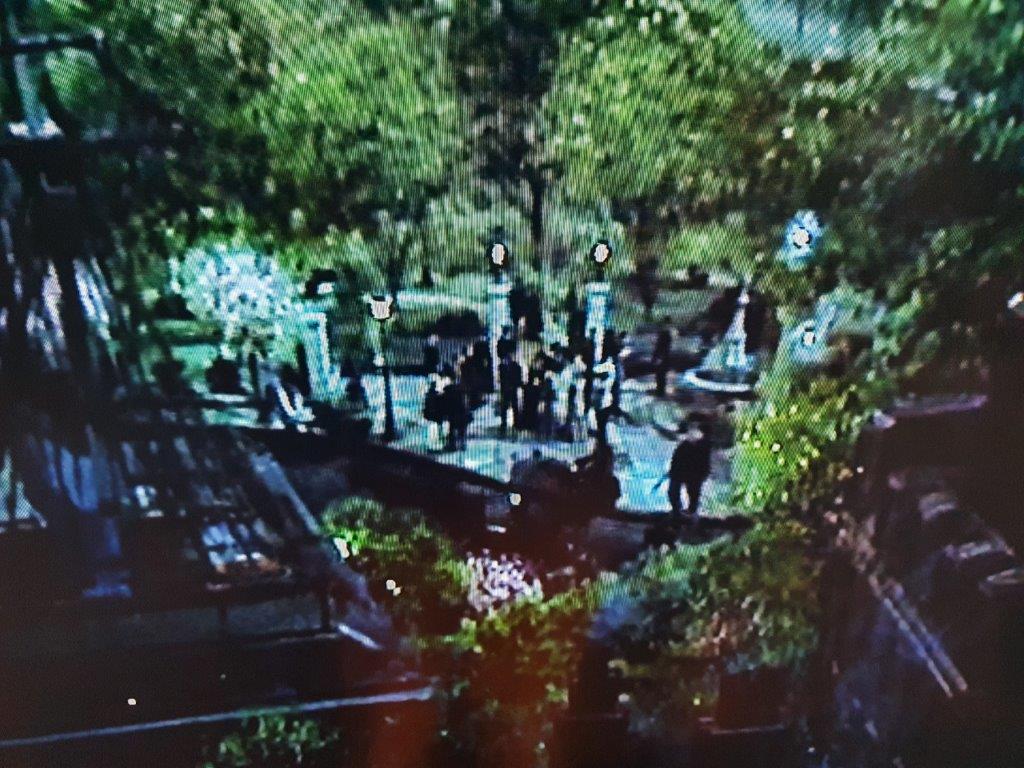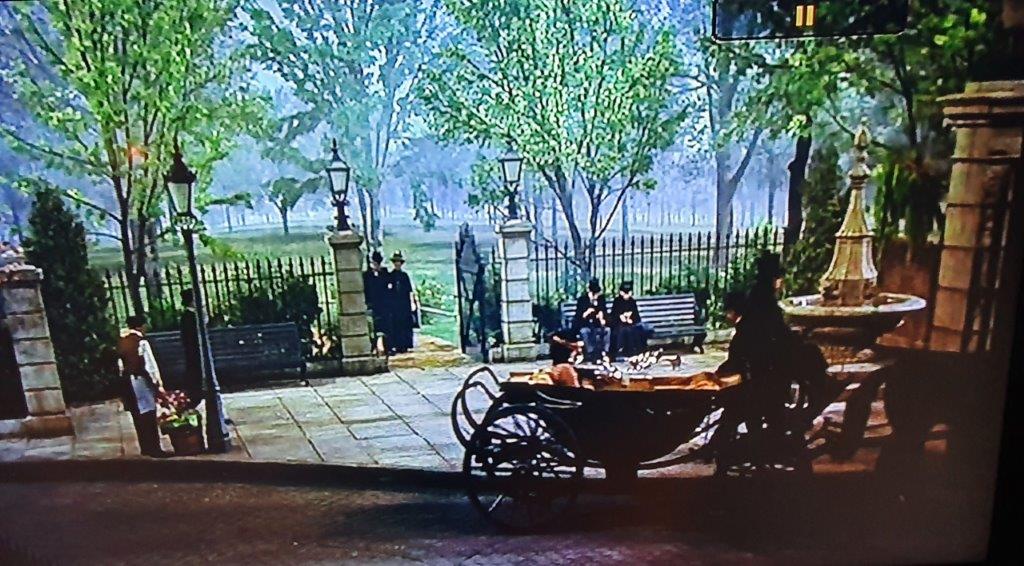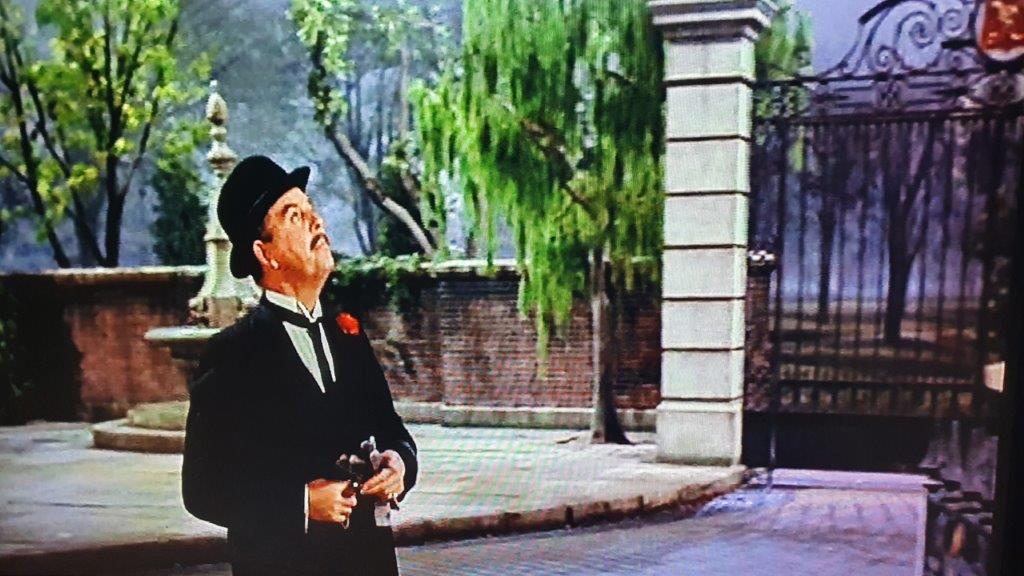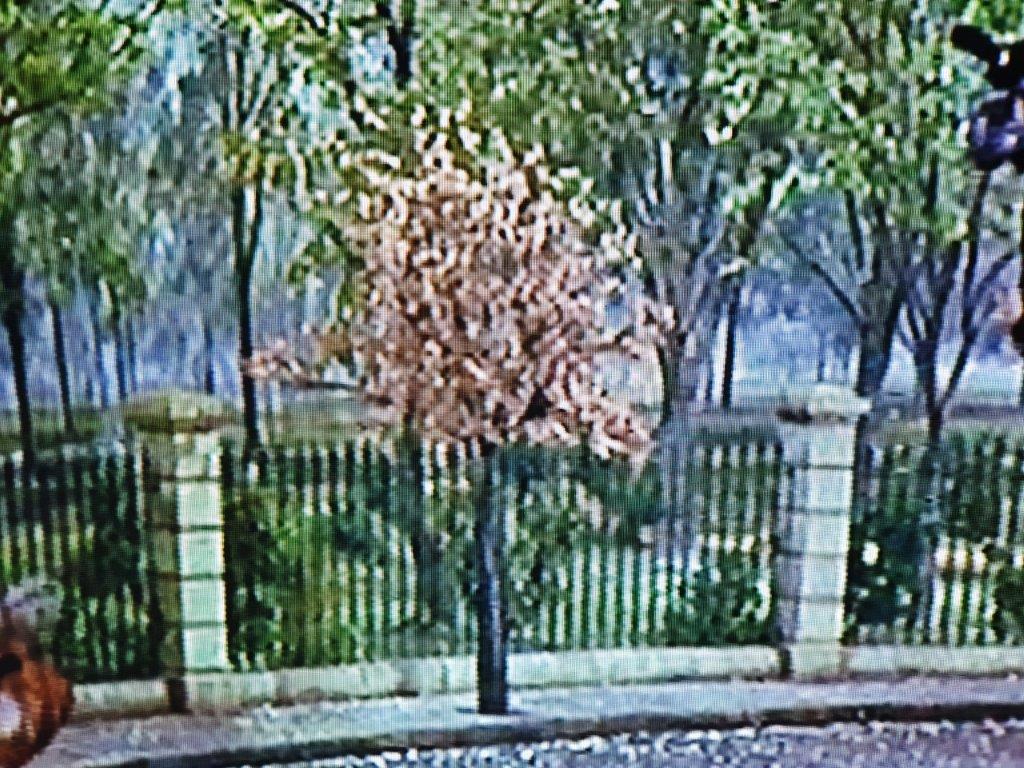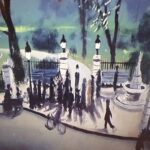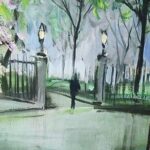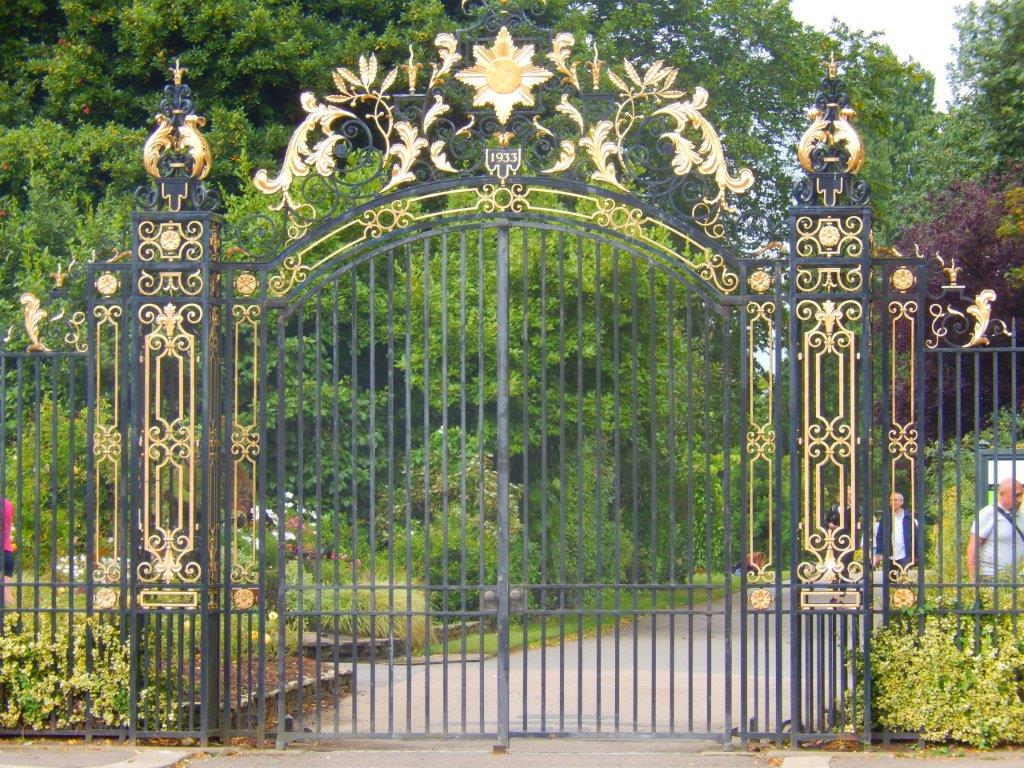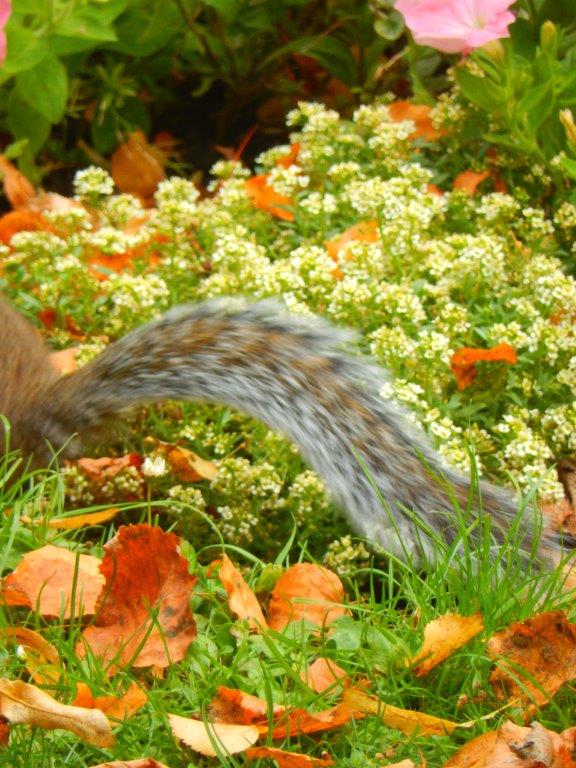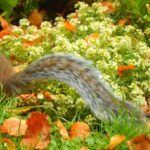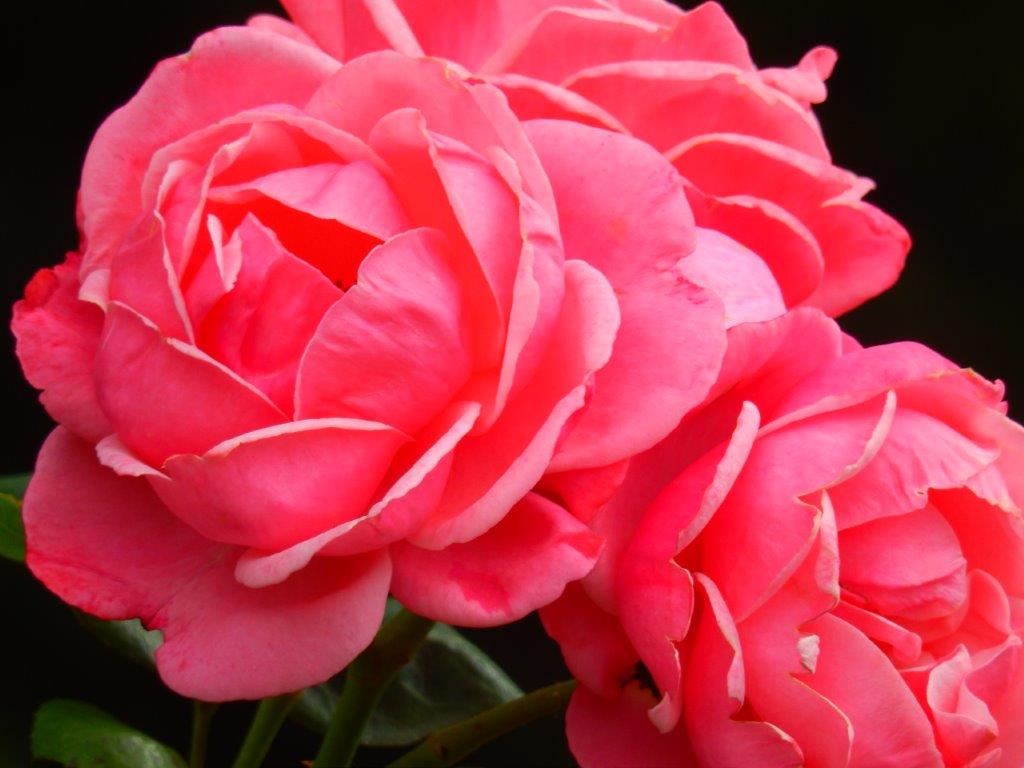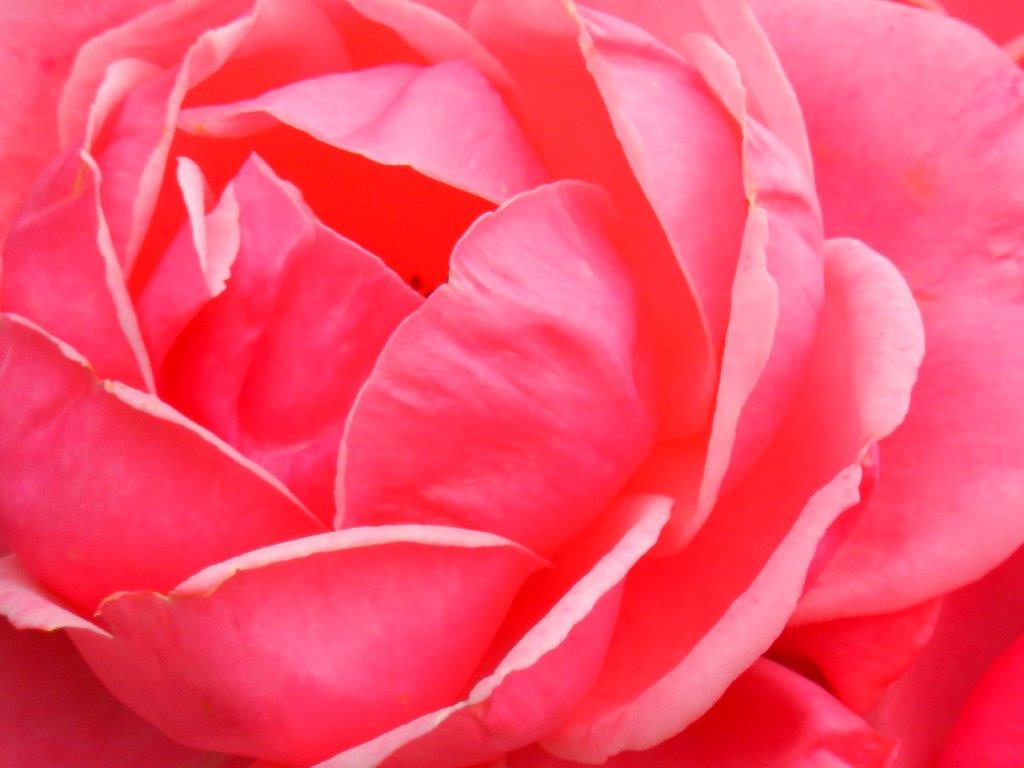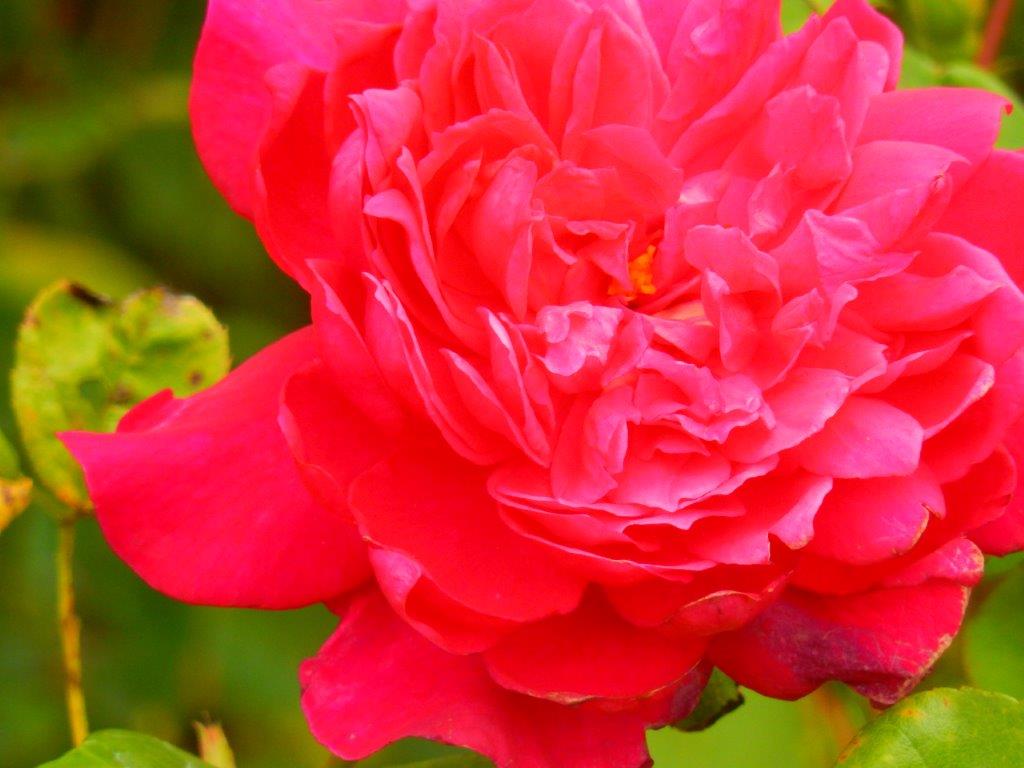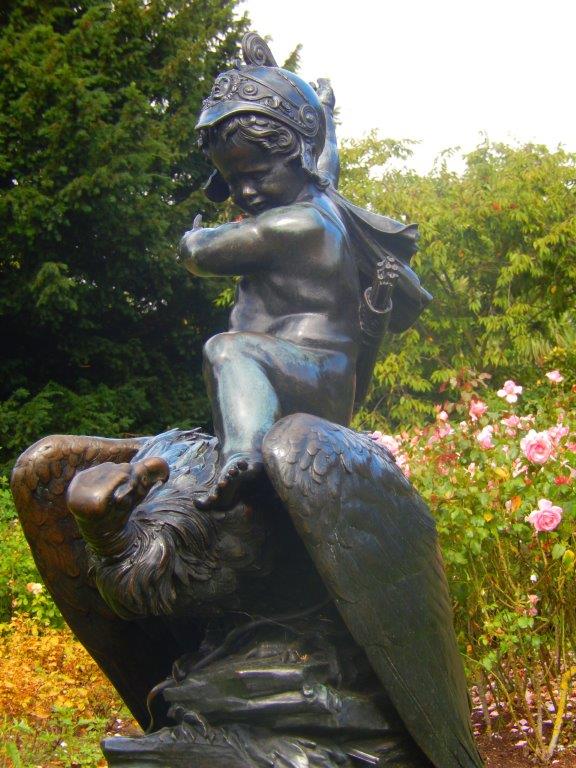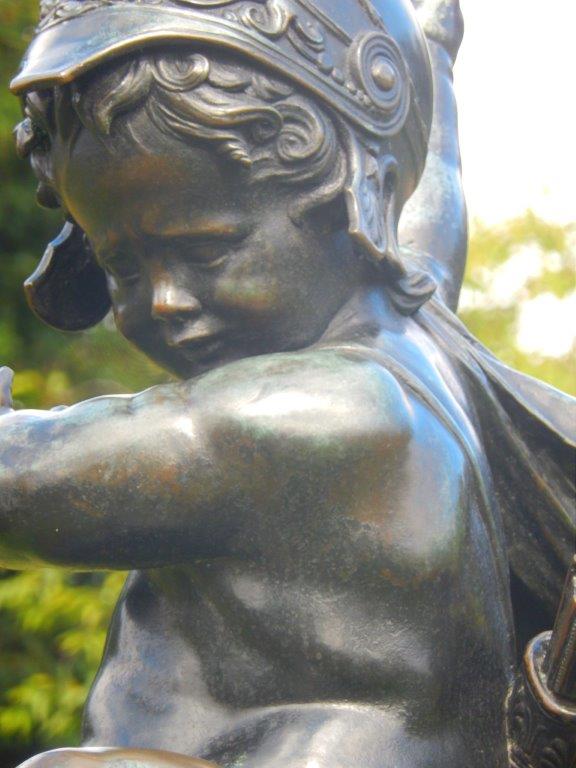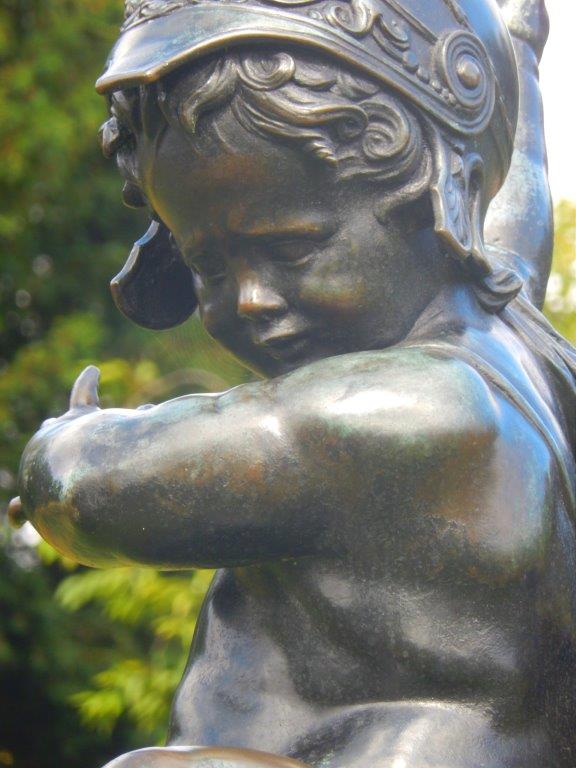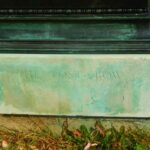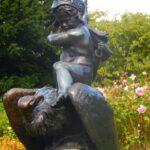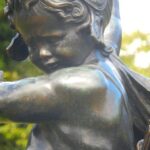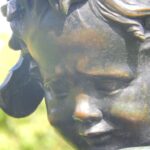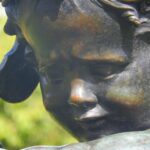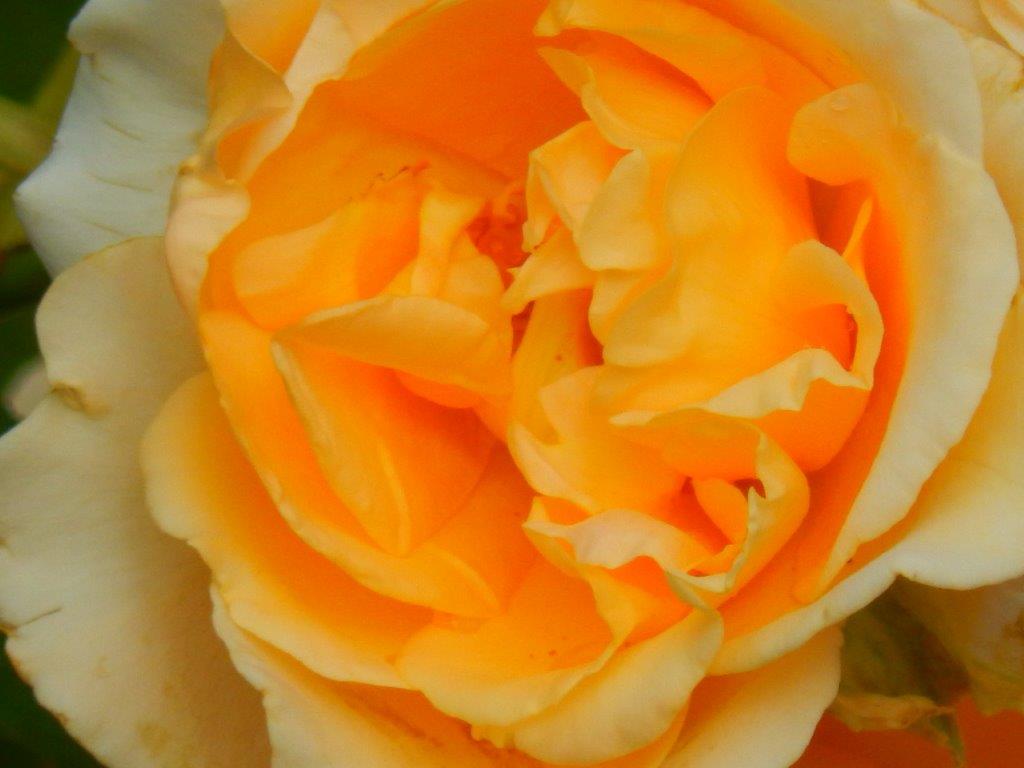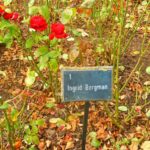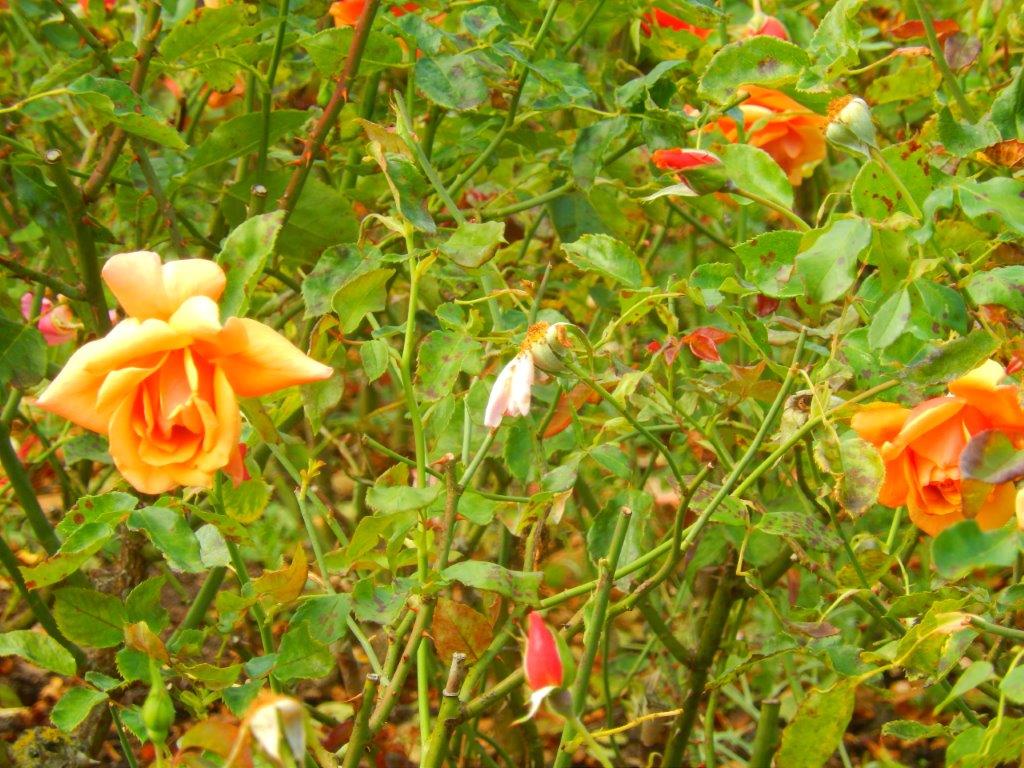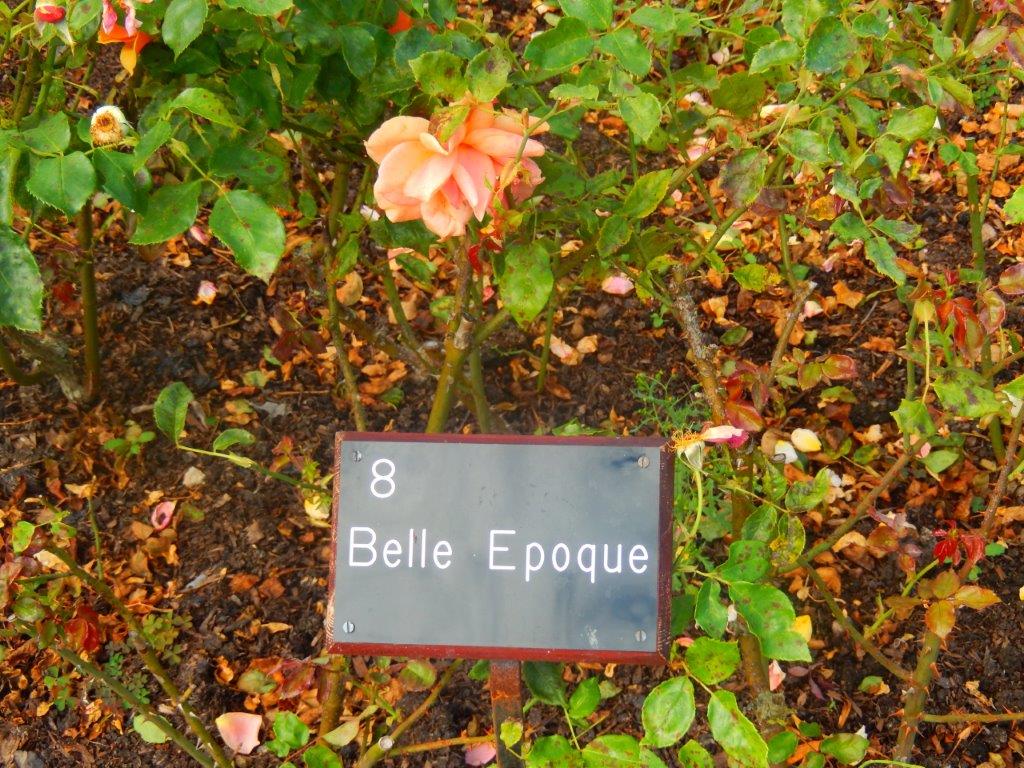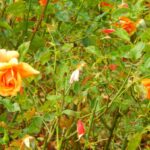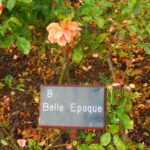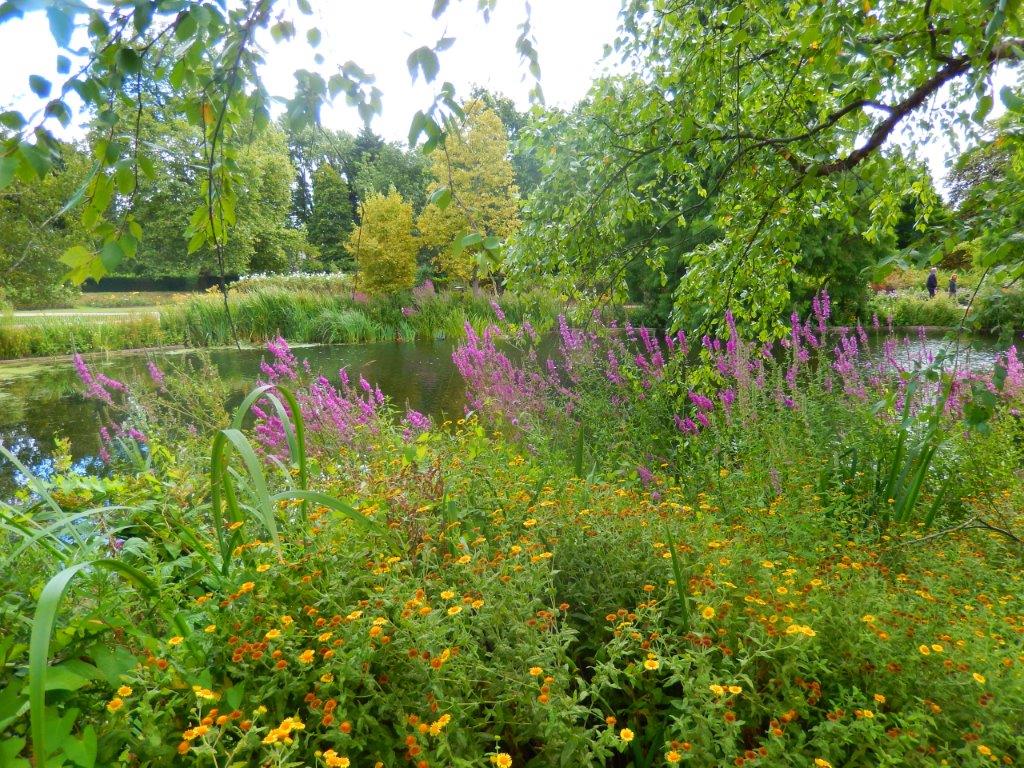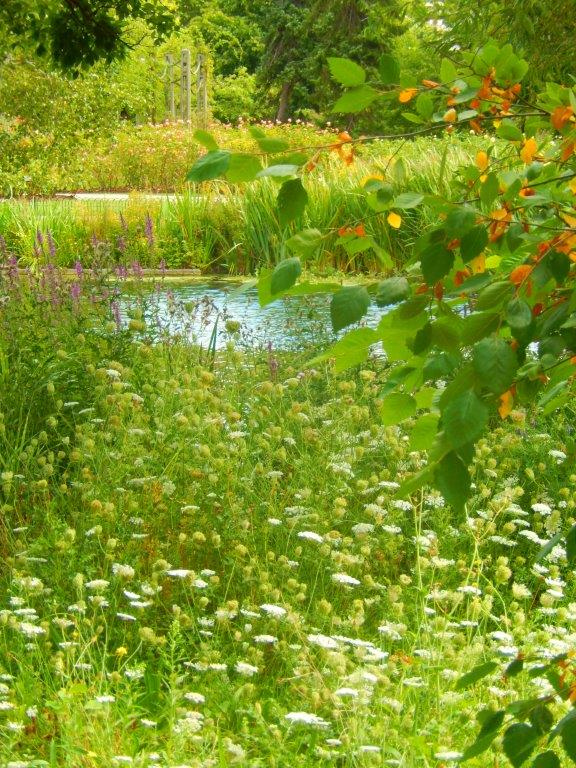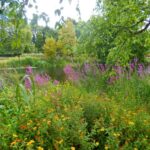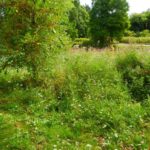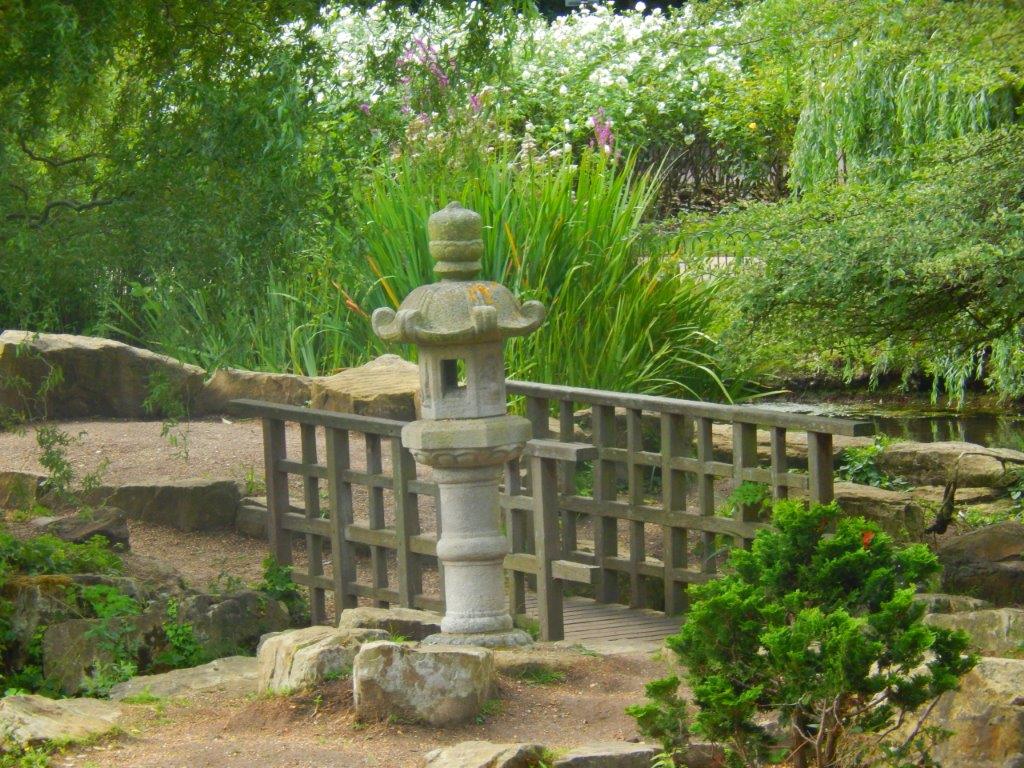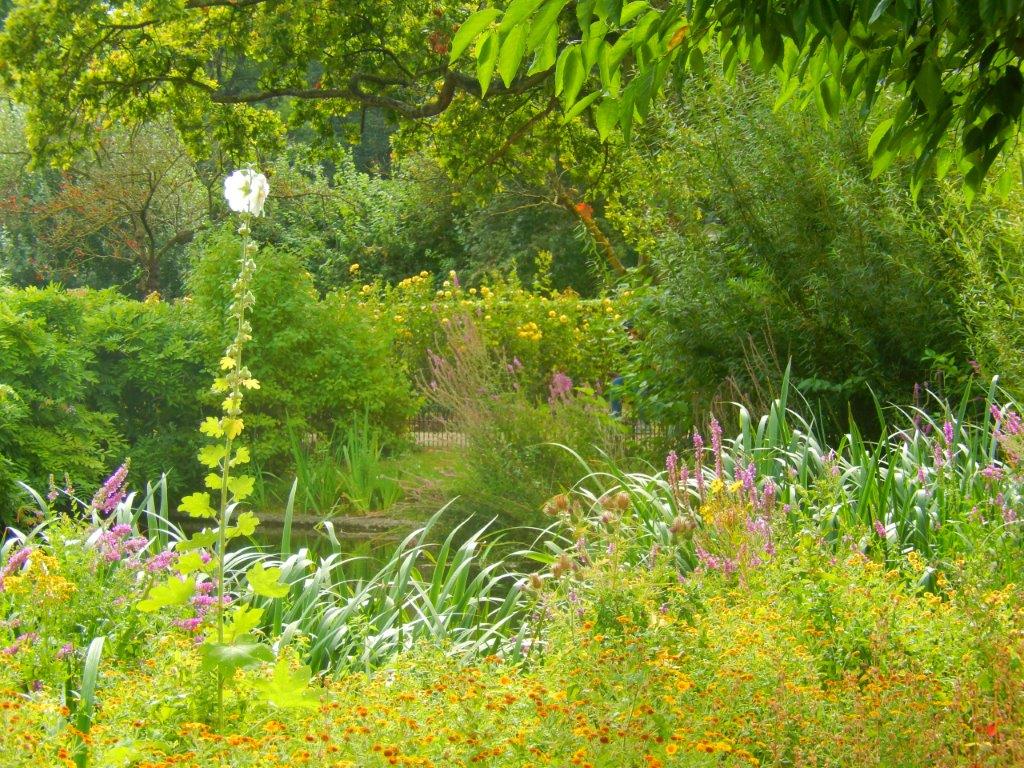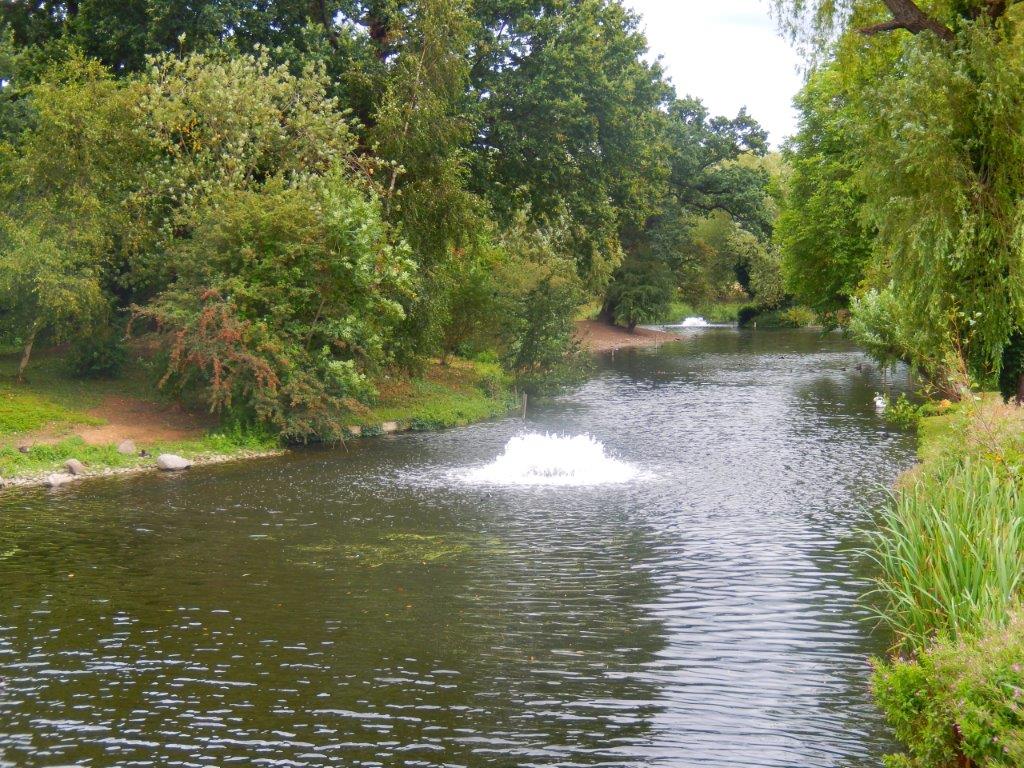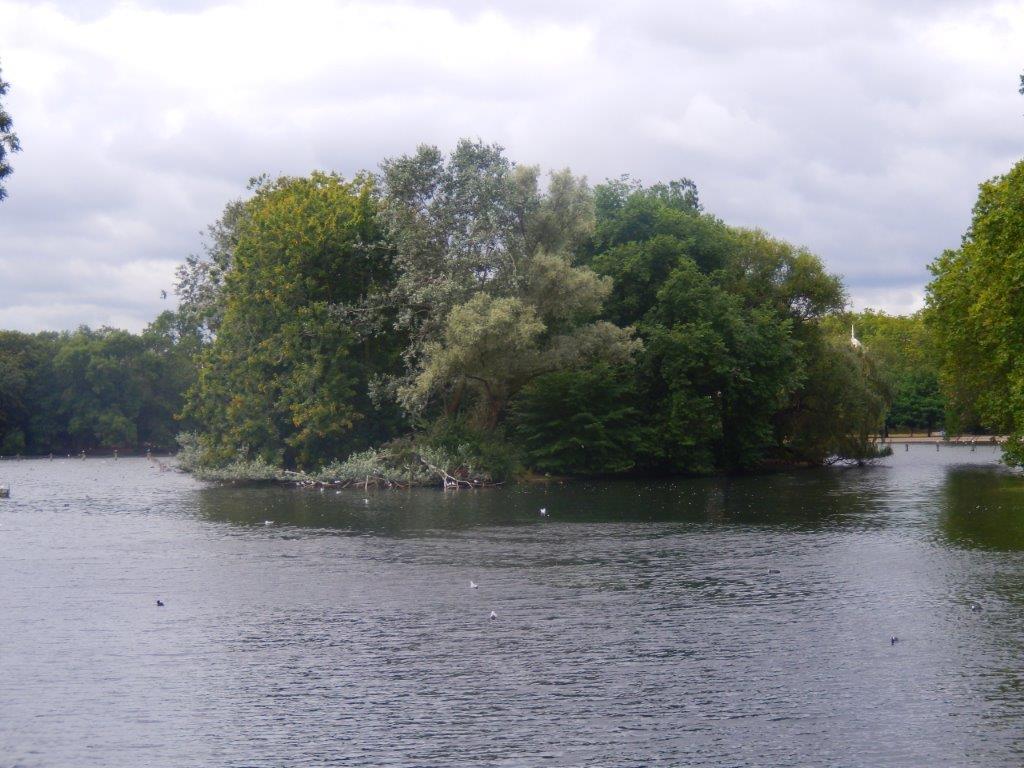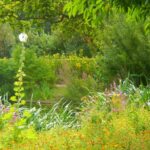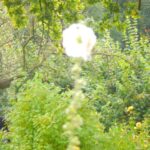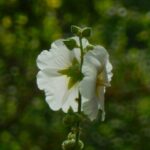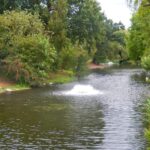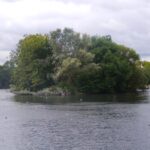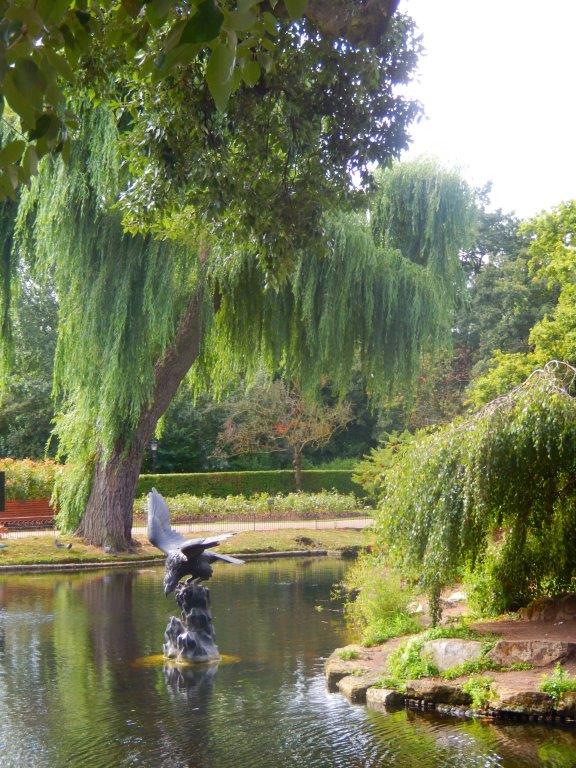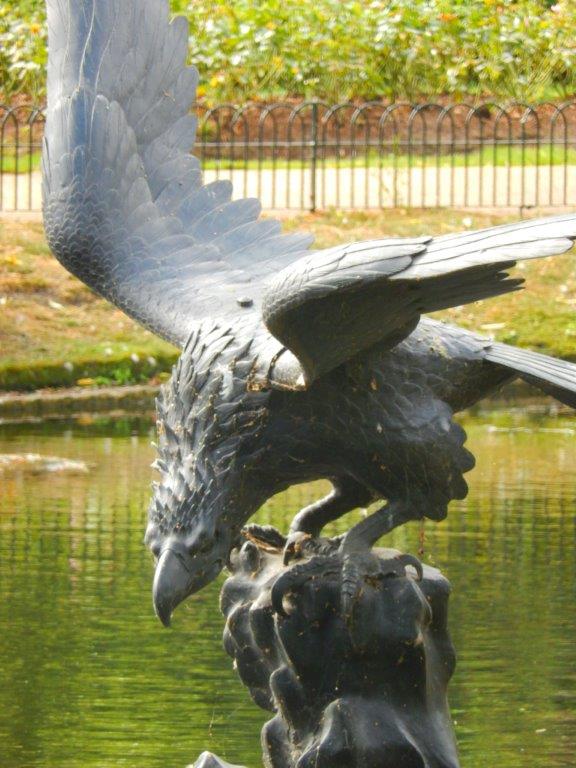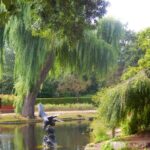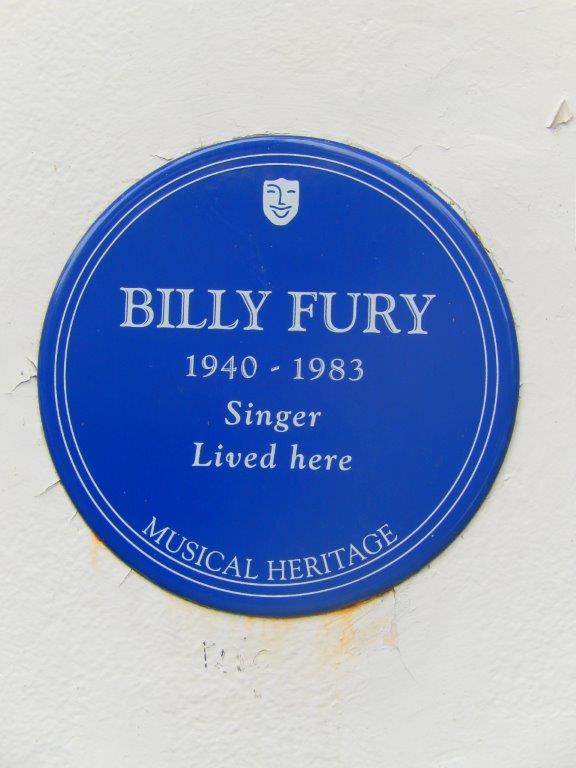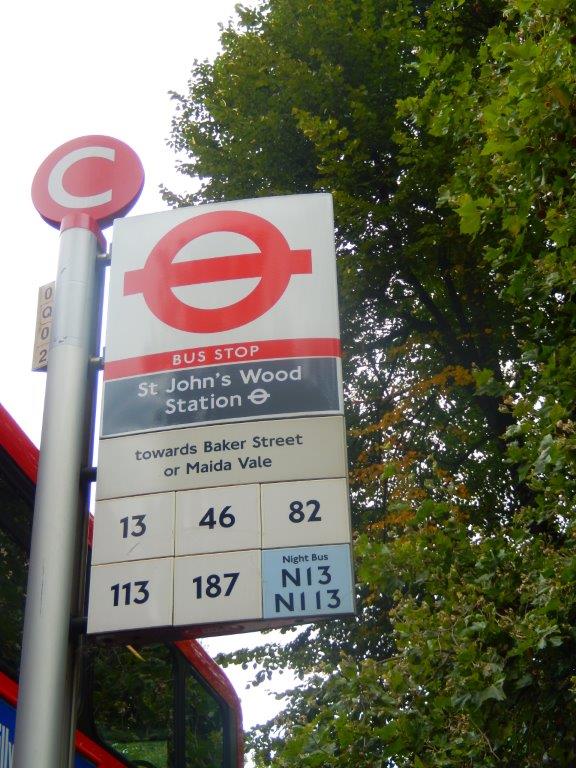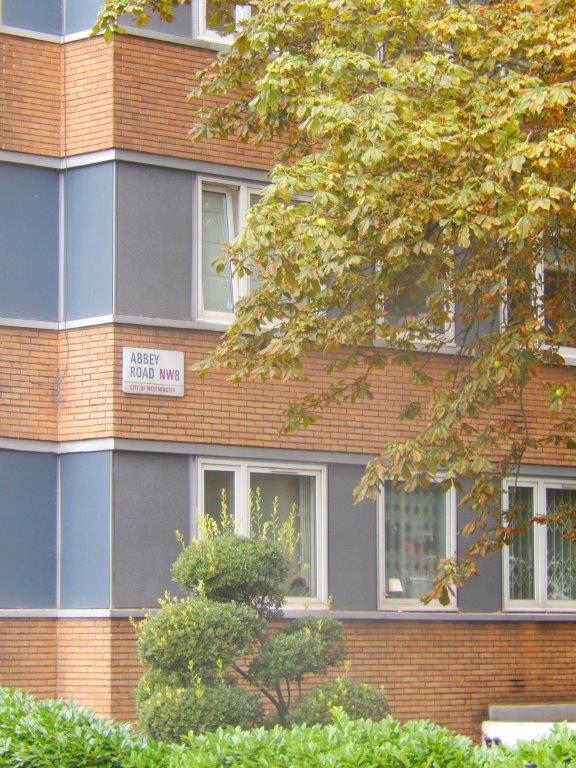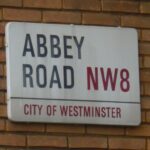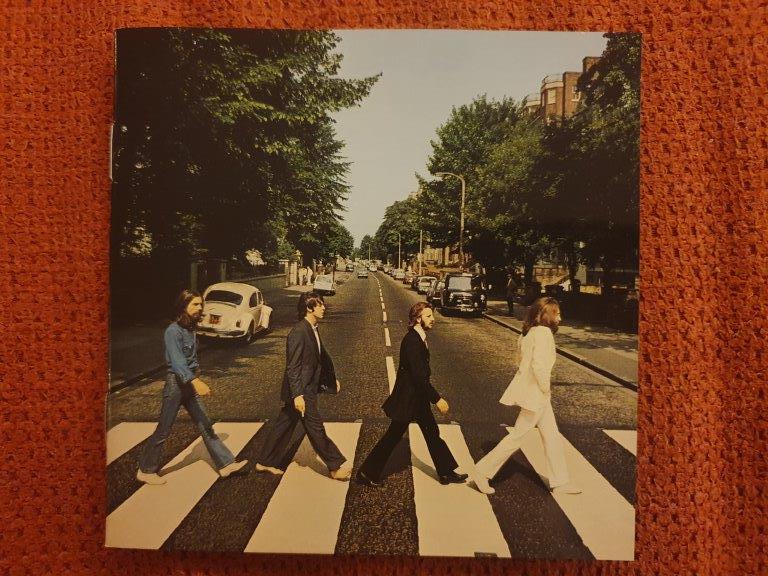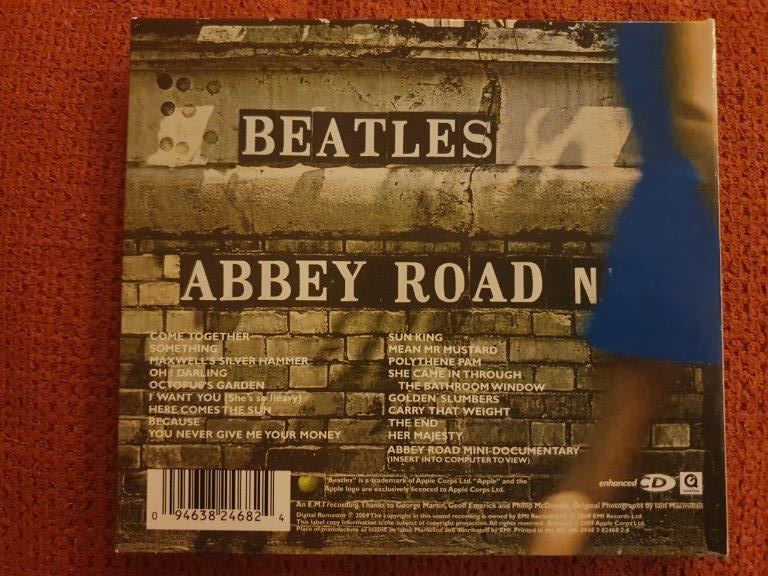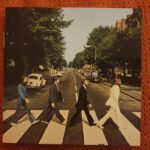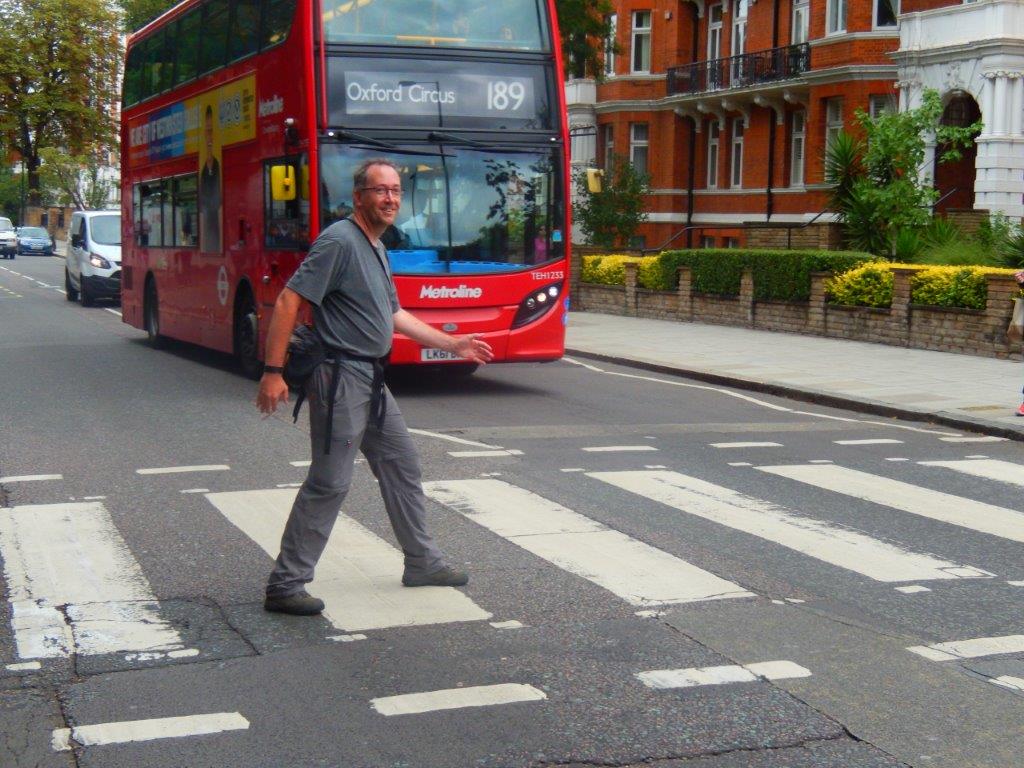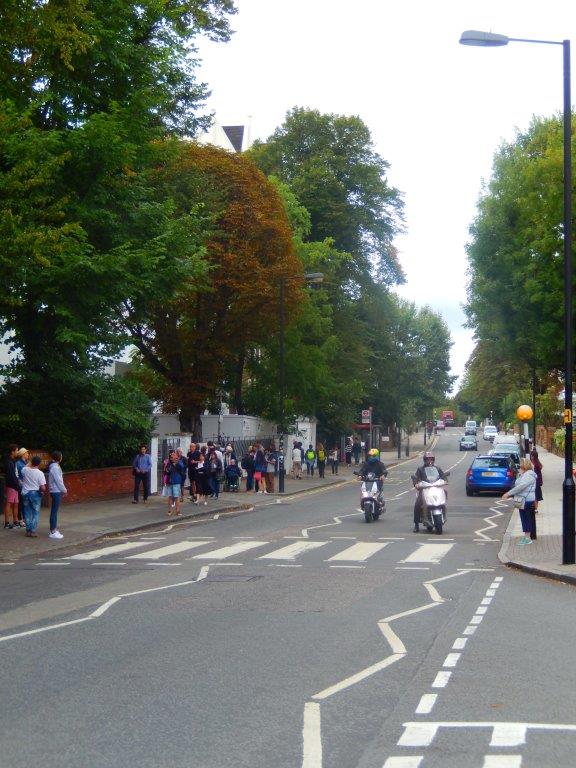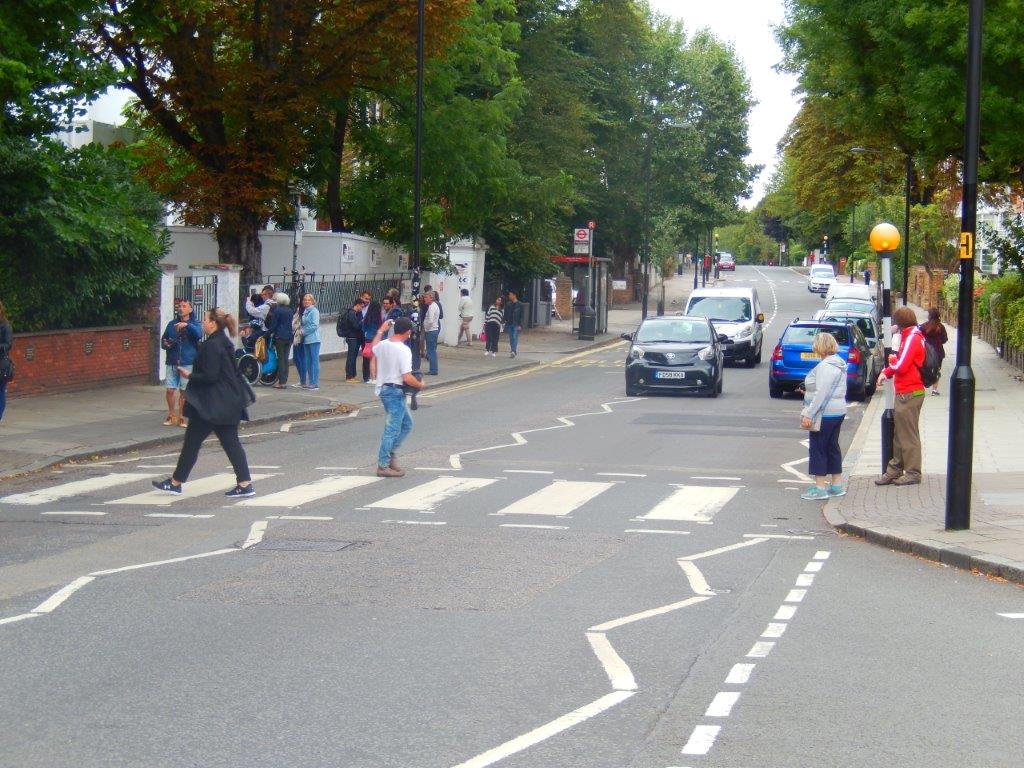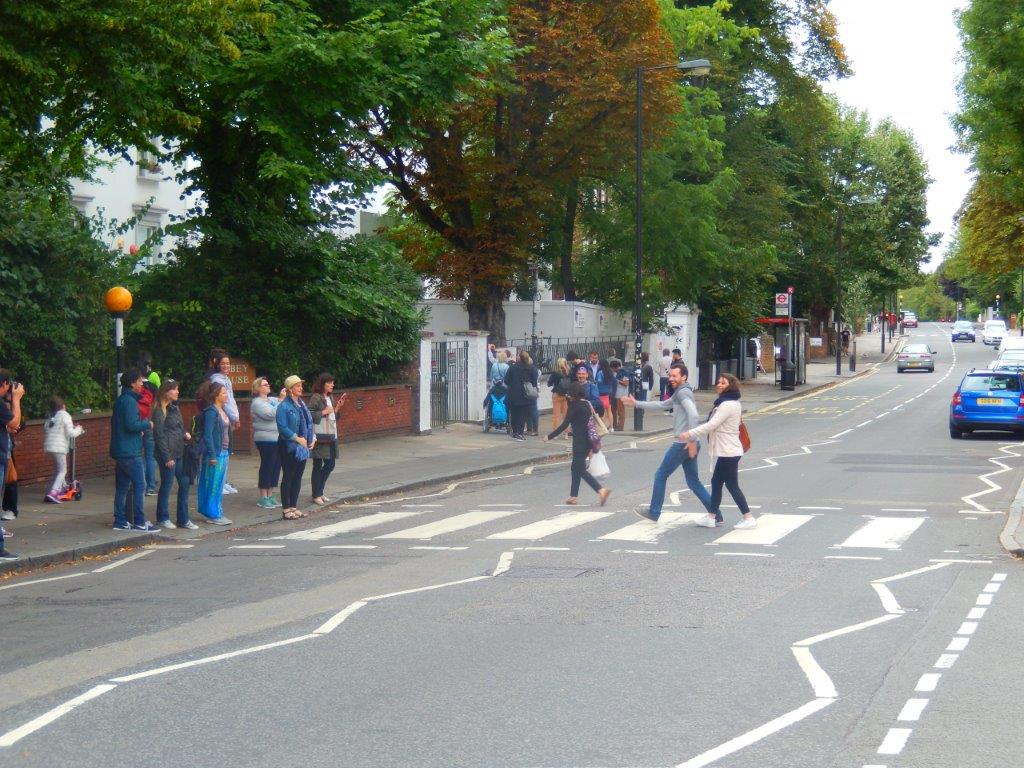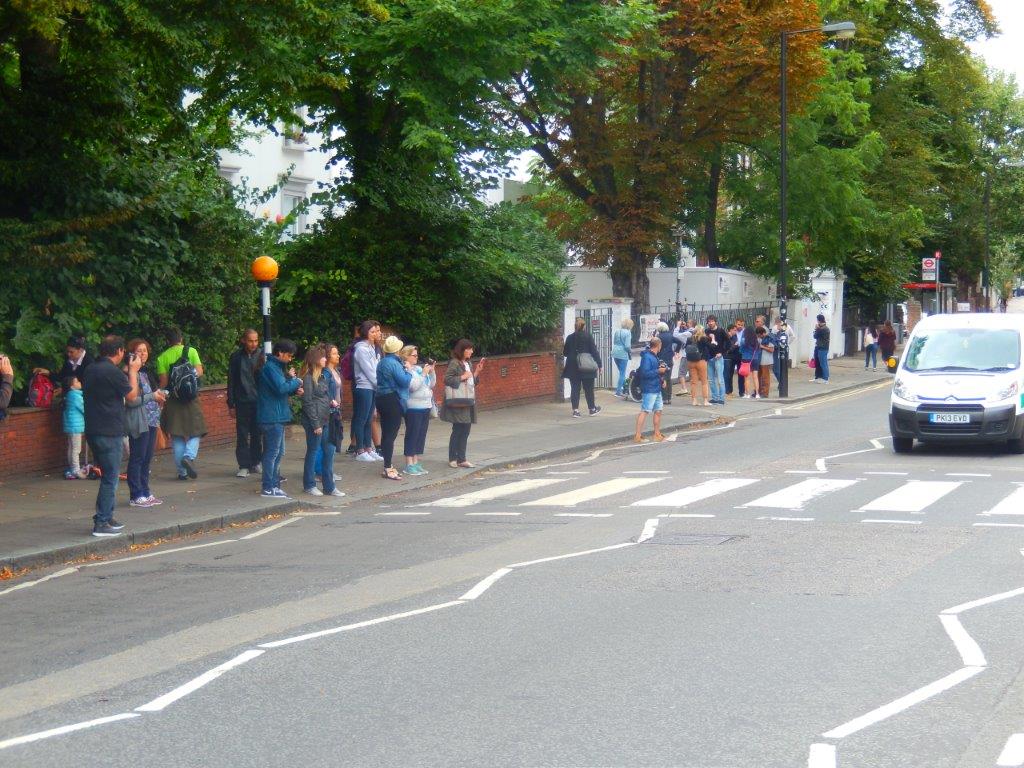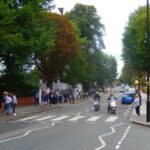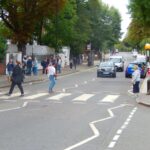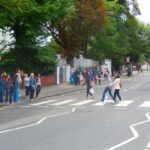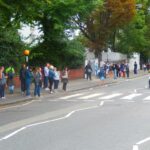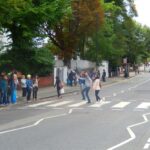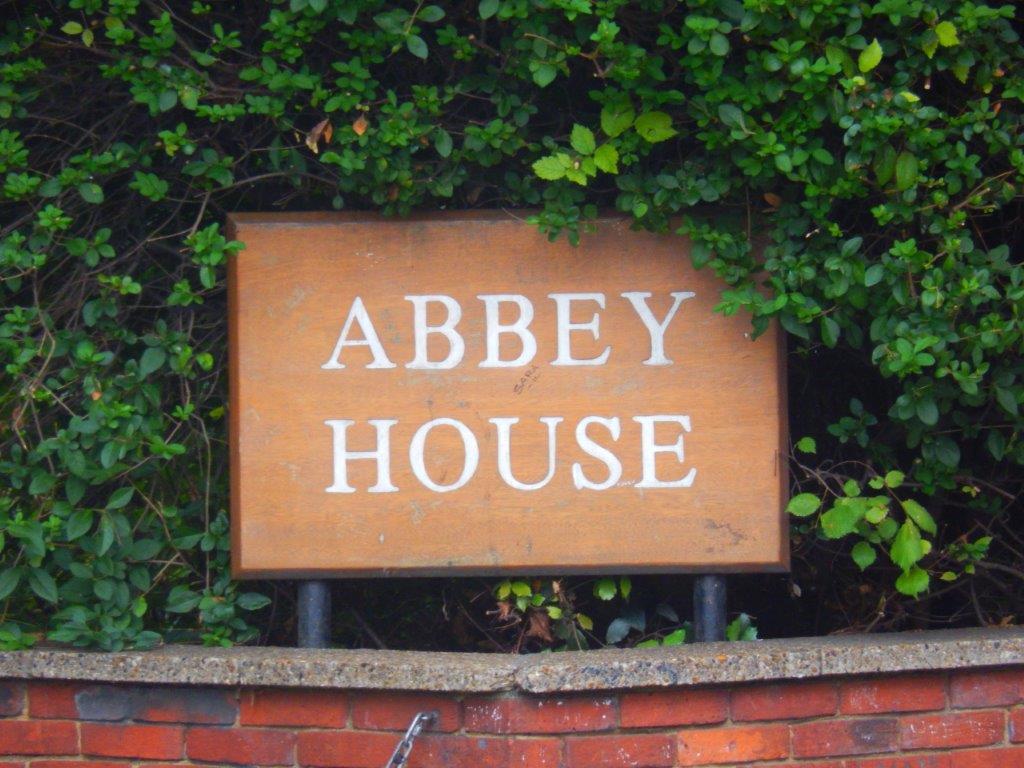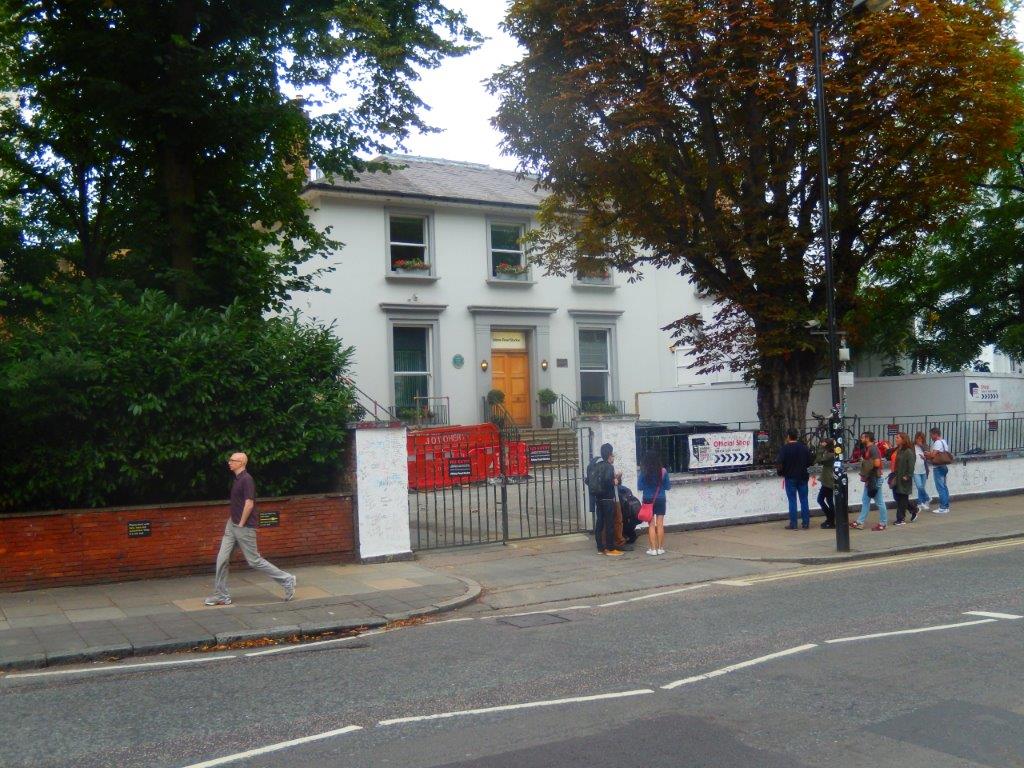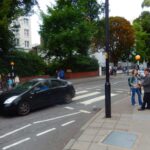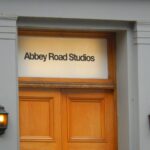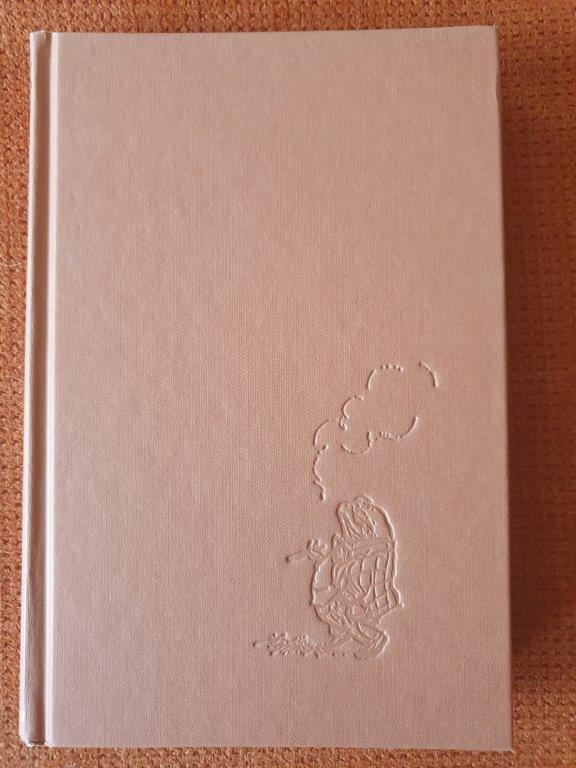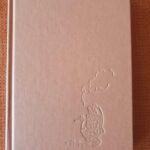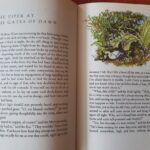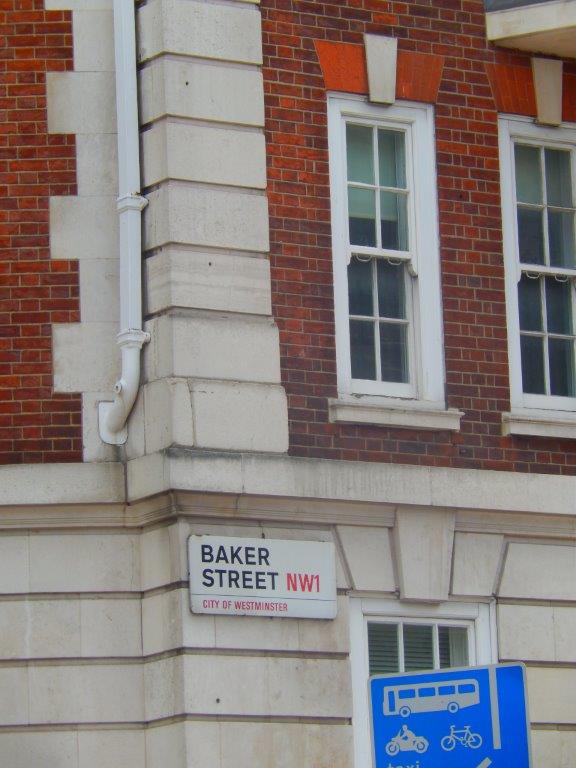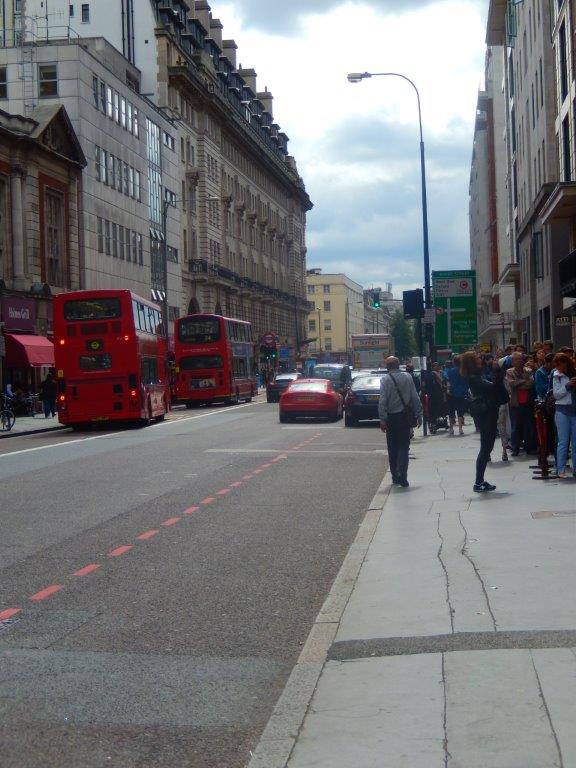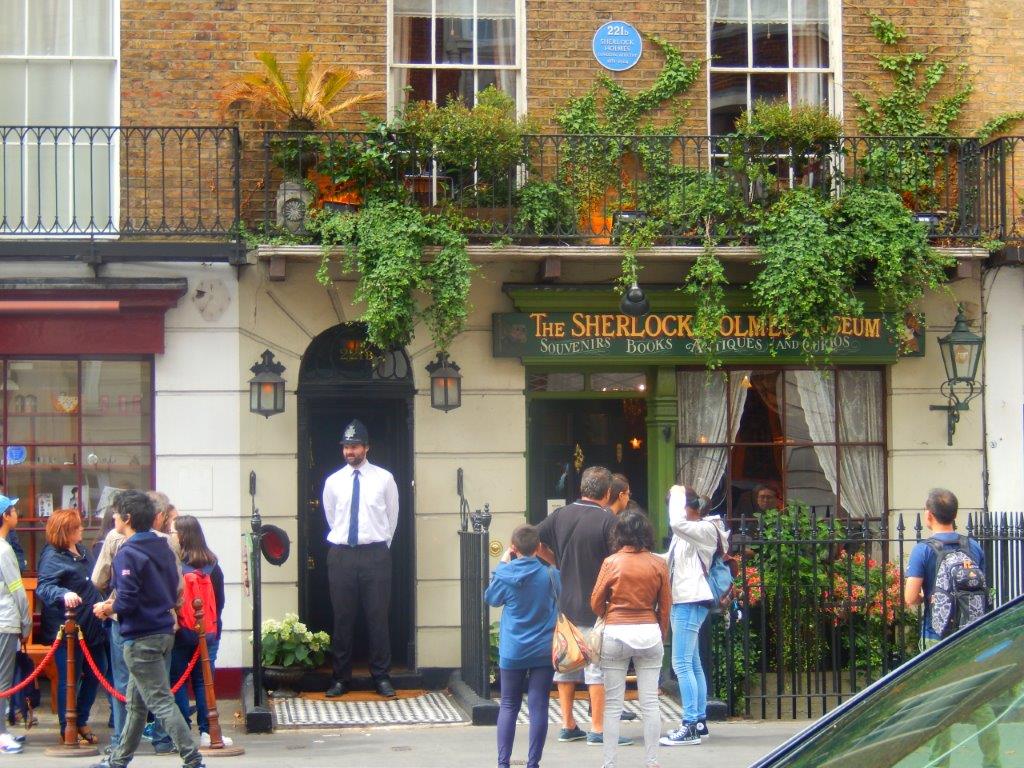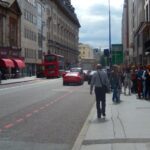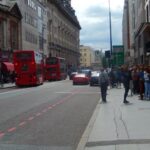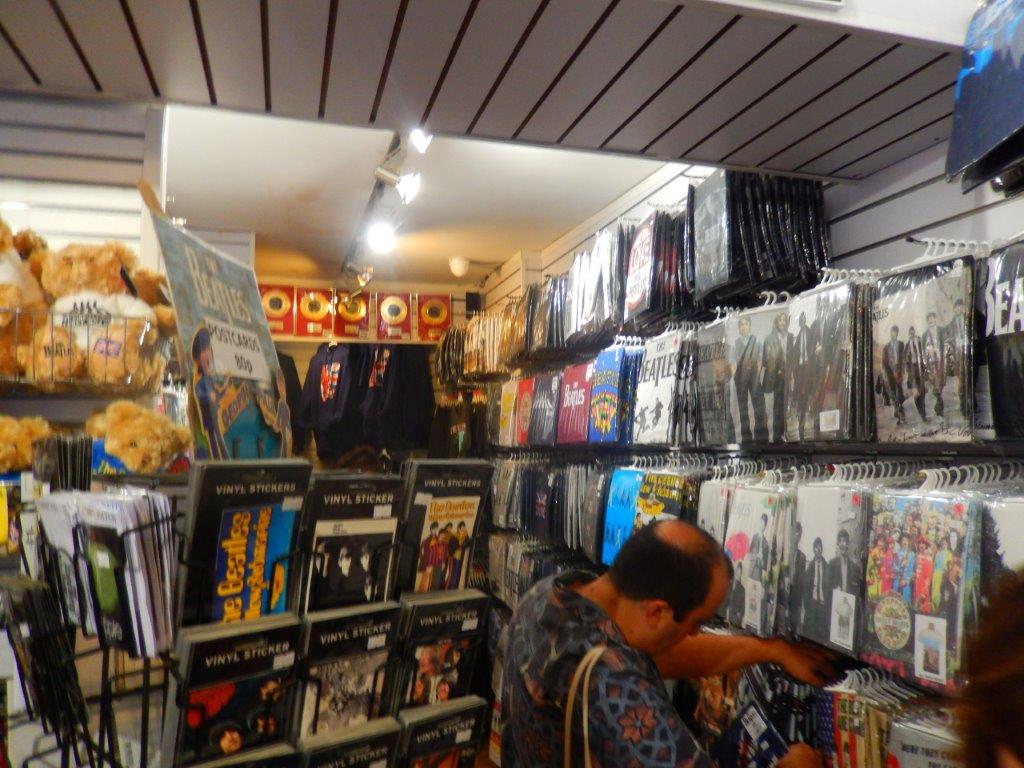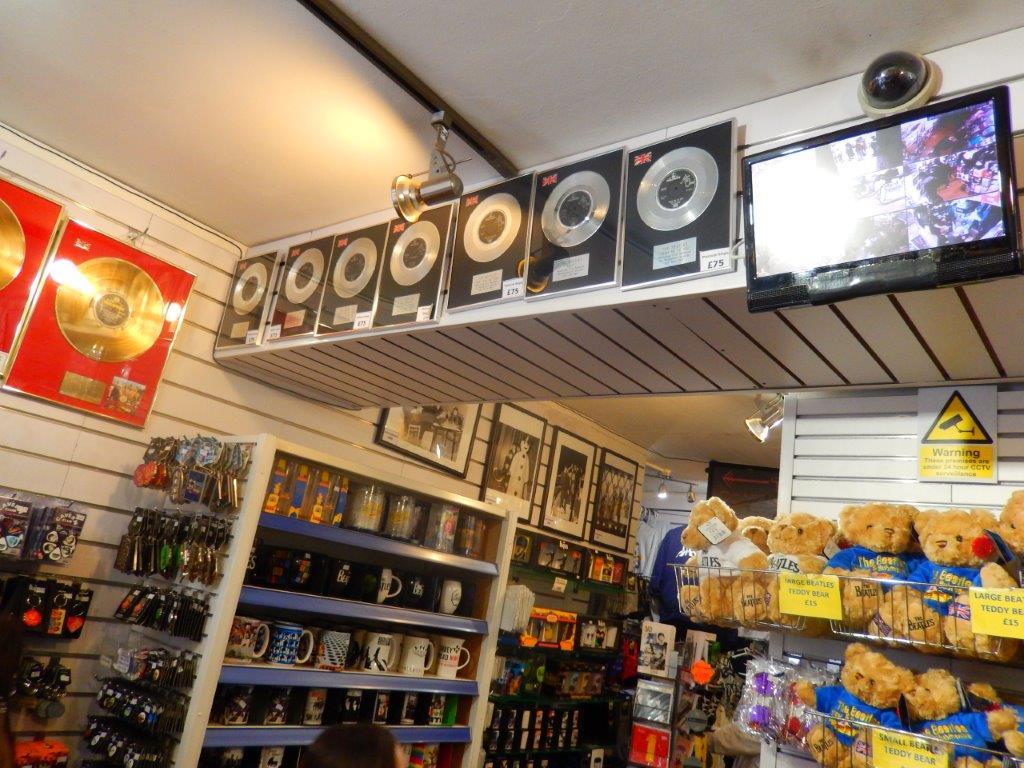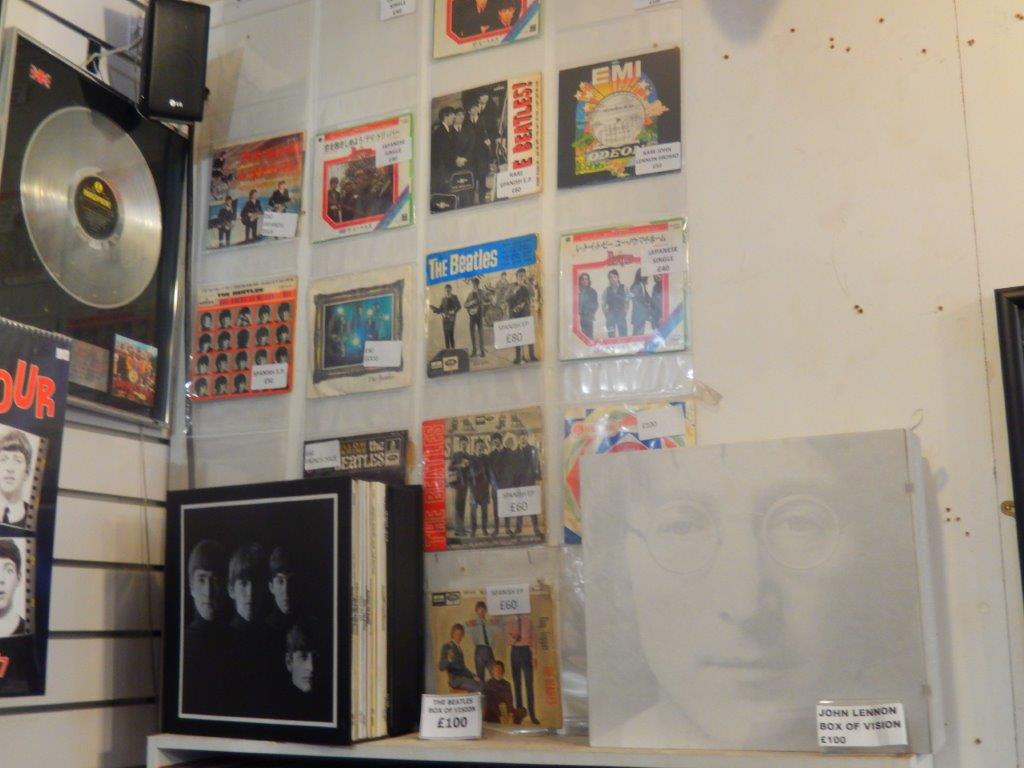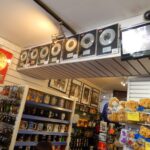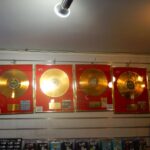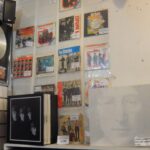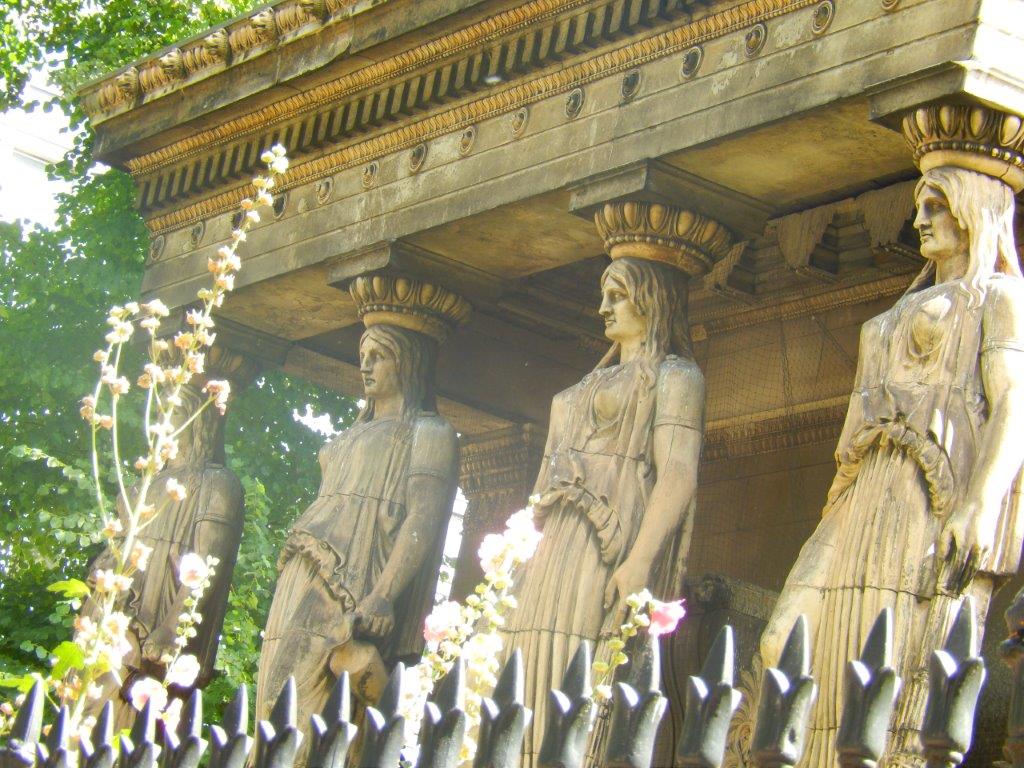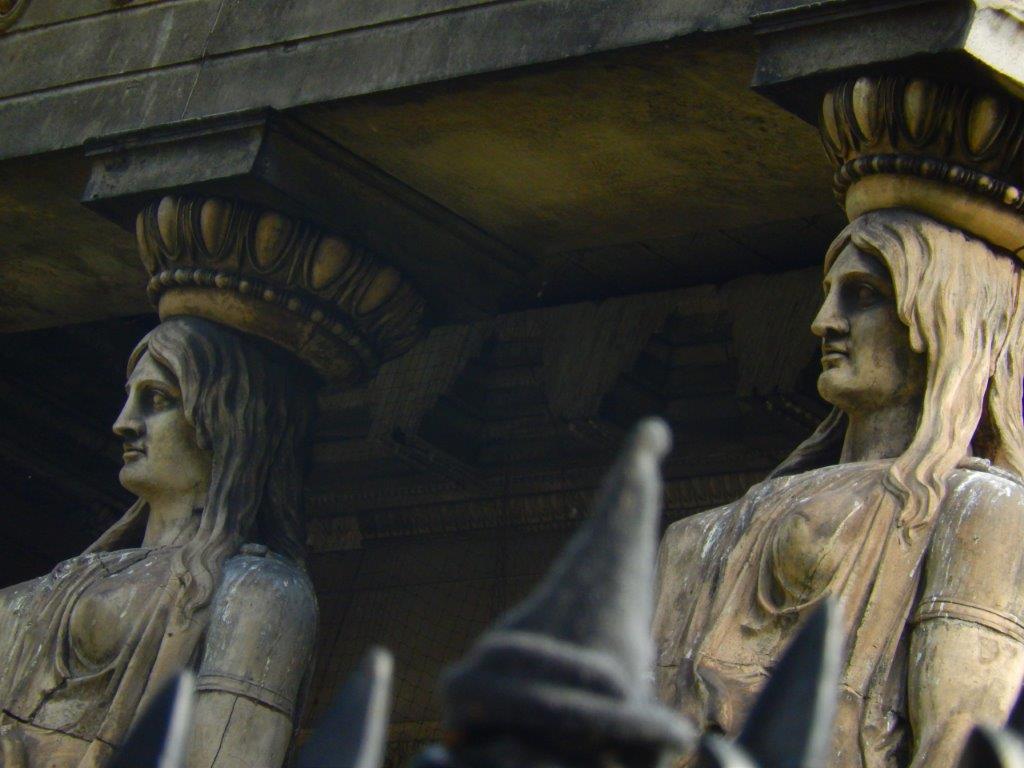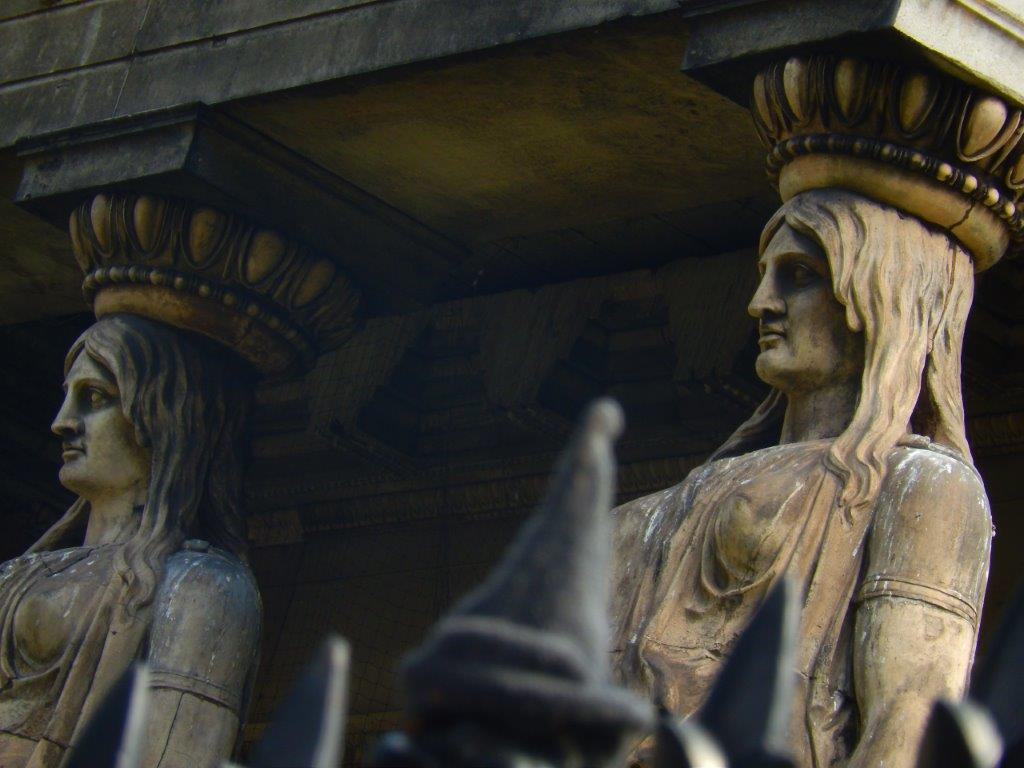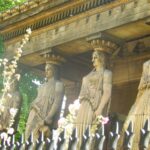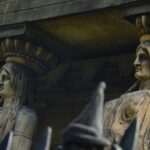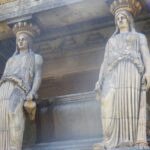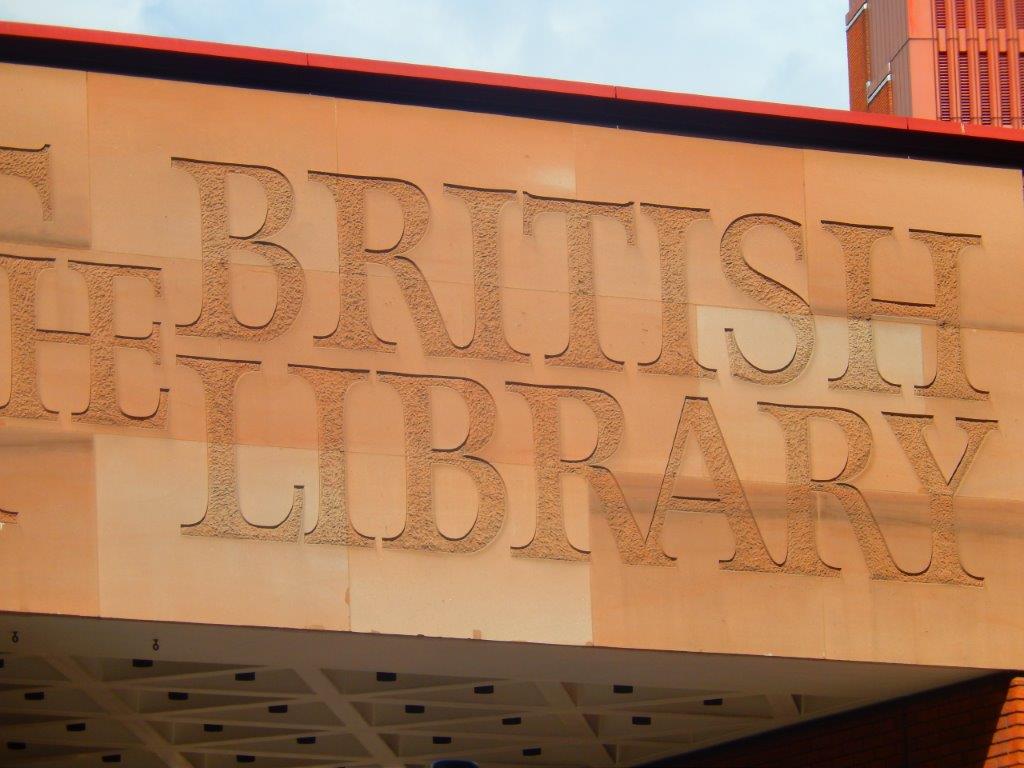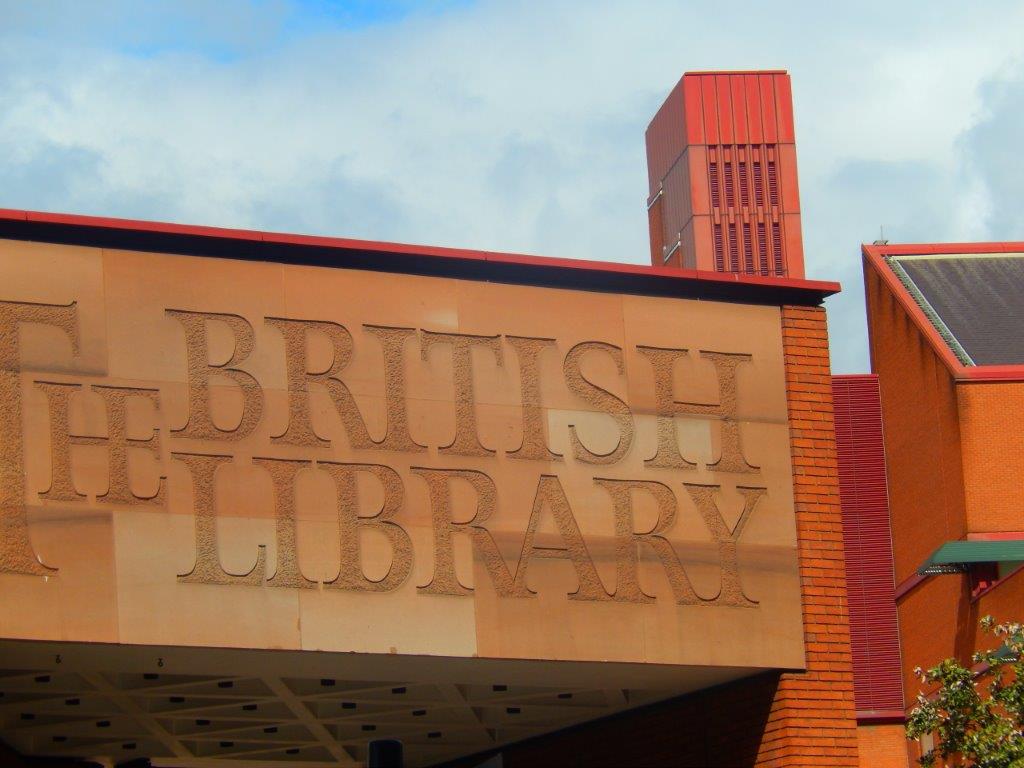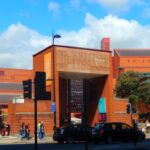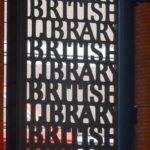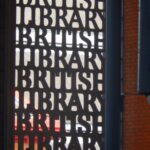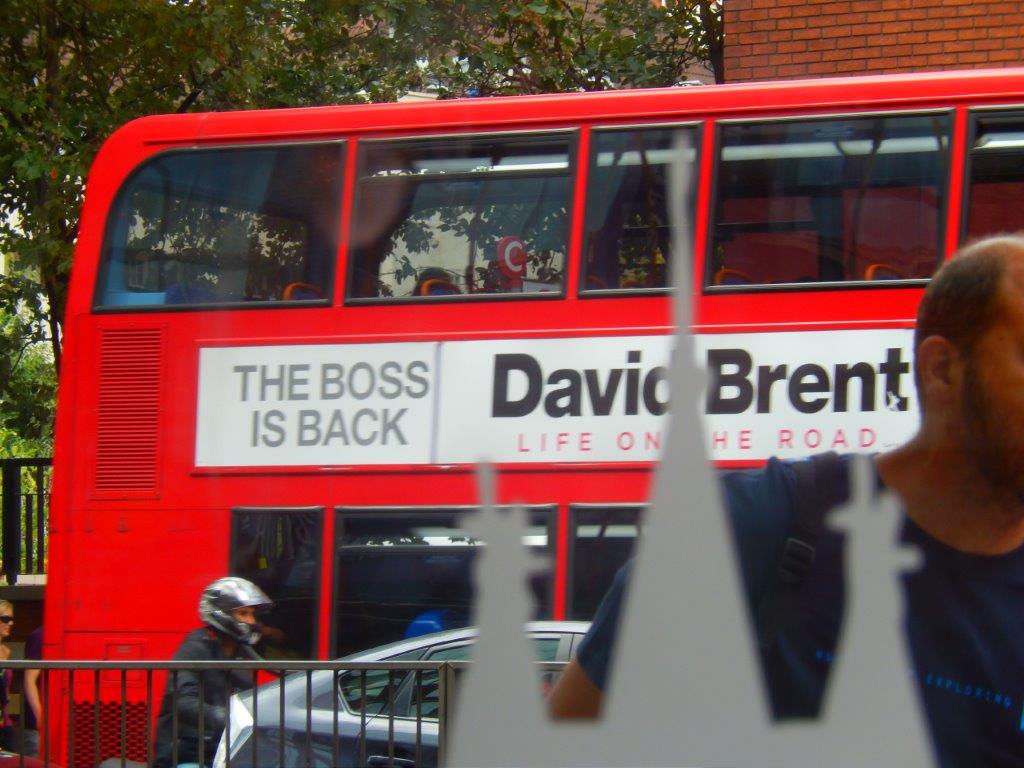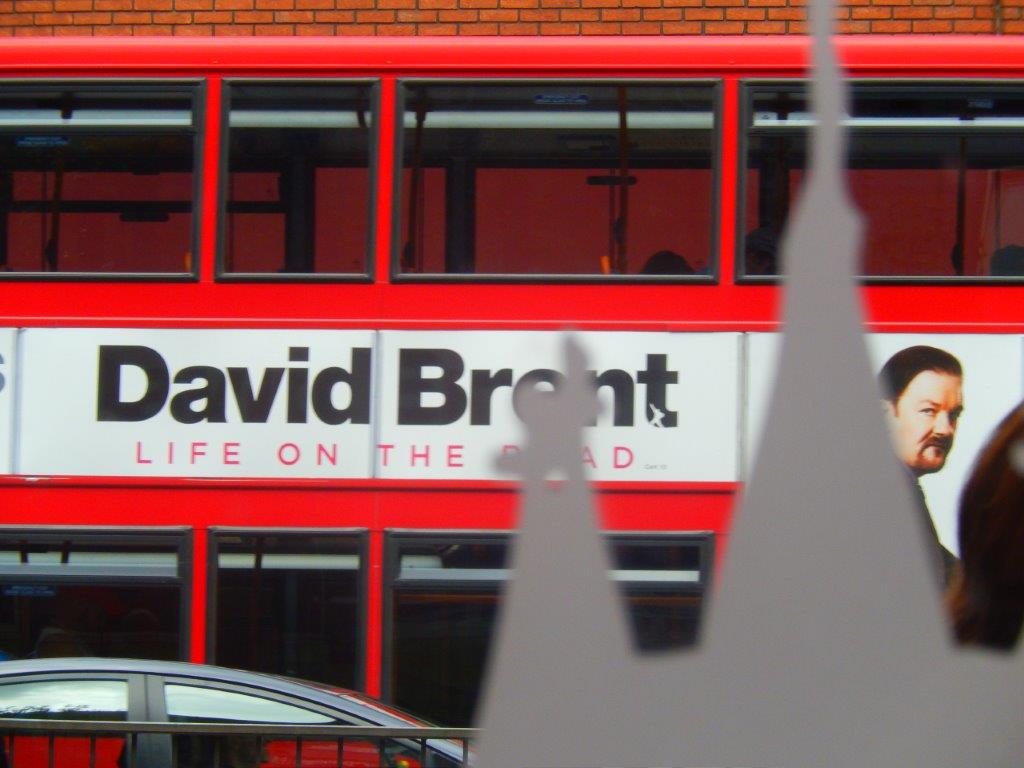London: The Piper at the Gates of Dawn (City Walk)
The Wandelgek was trying to spend his last day in London well. Weather had improved significantly after a very rainy yesterday, which had been spend inside all day at the Warner Bross. Studios in Leavesden, but now the sun had left its hiding place.
It would become another day of finding traces of locations or just references that had somehow a connection with classic children’s literature. But there were other (sometimes more obvious) reasons to visit such locations too.
On his very first day in London, The Wandelgek had visited Hyde Park and Kensington Gardens because they were obvious inspirations for P.L. Travers and J.M. Barrie, to write the wonderfully whimsical stories of Mary Poppins and Peter Pan. But there was another park which constantly came up in books and blogs that tried to define what inspired these writers, specifically when it came to P.L Travers’s Mary Poppins story.
“It’s time for our outing in the Park”
The entrance of the park in the book, in the Disney movies and in reality
In the book illustrations by Mary Shepard the entrance of Regents Park looked like this:
- The Long Walk is typical for London Parks and similar to the path over the Long Bridge, crossing through Regents Park.
- The elaborate Lion and Unicorn Gates, and the fence and gates at Cherry Tree Lane, where Bert made his chalk drawings are different but quite similar as well to the ones around Regents Park.
- The Rose garden at the fountain resonates in the Rose Garden of Regents Park.
- The Lake quite resembles the area of Queen Mary’s Garden.
- Cherry Tree Lane is a mirror reflection of the area north of Primrose Hil and some streets around Kensington Place.
- Even the low “fences” to indicate the border of the grass fields which is shown in several scenes of the movie Mary Poppins returns, look like the ones used in Regents Park.
In general: The whole of Regents Park breaths the atmosphere of a typical London Park and thus of the park in Mary Poppins.
In the Disney movies the Park entrance looked like this:
Mary Poppins regularly took Jane and Michael Banks for an outing in the Park, right accross the street from their home at Cherry Tree Lane number 17. There they would fly a kite or meet Bert the Chimney Sweep or chestnut seller or kite seller or street lantern extinguisher or street artist or performing whatever job was opportune…
In reality, the park entrance was very much like that in the movie and in the book map illustration by Mary Shepard:
See how similar these entrances are? Not identical but similar. I mean that a typical thing for London is that parks are fenced and have gates. In most other countries (but also in lots of other places in England) there are no fences or gates around a park. Hyde Park, Kensington Gardens and Regents Park however, do have those.
Grey Squirel
Years ago The Wandelgek visited London for the 3rd time, but actually it was the 1st time. The actual 1st (and 2nd) visits were only 2 bike rides from one railway station to another to catch trains coming from Harwich and going on to Scotland and vice versa.
But my 3rd visit lasted a week and I was studying in the London Center (as database administrator), but had my evenings and an additional weekend to spend on outings. The best outings then, were those into Hyde Park where The Wandelgek 1st saw a Grey Squirel. When The Wandelgek strolled into Regent’s Park he was almost immediately welcomed by this little grey squirel…
The Wandelgek walked through Regent’s Park towards what was described in loads of travel blogposts and paperback travel guides as the best example of a typical English Rose and Country Garden:
Queen Mary’s (Rose) Garden
The lost bow – statue
The bronze statue is that of a muscular toddler earing a large helmet while sitting on top of a naturalistic looking vulture. He seems to be attacking the vulture, but misses an arrow which presumably was in his hand.
Ingid Bergman
 Ingrid Bergman was a Swedish actress who starred in a variety of European and American films, television movies, and plays. She won many accolades, including three Academy Awards, two Primetime Emmy Awards, a Tony Award, four Golden Globe Awards, and a BAFTA Award. She acted in the role of Ilsa Lund in one of the very best movies ever: Casablanca. This rose was named after her.
Ingrid Bergman was a Swedish actress who starred in a variety of European and American films, television movies, and plays. She won many accolades, including three Academy Awards, two Primetime Emmy Awards, a Tony Award, four Golden Globe Awards, and a BAFTA Award. She acted in the role of Ilsa Lund in one of the very best movies ever: Casablanca. This rose was named after her.
The Belle Epoque
The Belle Époque or La Belle Époque (French for “Beautiful Epoch”) was a period of French and Western history. It is conventionally dated from the end of the Franco-Prussian War in 1870 to the outbreak of World War I in 1914. Occurring during the era of the French Third Republic (which began in 1870), it was a period characterised by optimism, regional peace, economic prosperity, colonial empires, and technological, scientific, and cultural innovations. In this era of France’s cultural and artistic climate (particularly within Paris) the arts markedly flourished, with numerous masterpieces of literature, music, theatre, and visual art gaining extensive recognition. This rose was named after this period in history.
Queen Mary’s Gardens were not only Rose Gardens. There was a beautiful wild flower garden at a small lake and even a Japanese garden.
Wild flower garden
Japanese garden
Another part of the Wild Flower garden
The Japanese Eagle – statue
The Japanese Eagle can be found in the Japanese garden, in the lake. It was presented to the park in 1974 and dates back to the early nineteenth century. It is not known who made it, but has been given a Grade II listing.
The Wandelgek left the park at Charlbert Street, walking into:
Beatles London
St. Johns Wood
From Regents Park, The Wandelgek walked into the St. Johns Wood neighbourhood 1st following Charlbert Street into St Johns.
There’s a:
- St John & St Elizabeth Hospital,
- St John’s Wood Church,
- St John’s Wood Church Gardens,
- Harris Academy St John’s Wood,
- Bright Horizons St John’s Wood Day Nursery and Preschool,
- The Ivy St John’s Wood (restaurant),
- The New Inn St John’s Wood,
- St John’s Wood United Synagogue,
- St John’s Wood Metro Station
It looks like the Londoners have been overdoing things a bit when they made a Saint out of John Lennon ??.
Billy Fury
Somewhere in St Johns Wood, I suddenly saw the house of a British Singer named Billy Fury of which I had never heard before. He never had a hit or an album that topped the charts, but he became famous because he did have a consecutive string of 24 chart hits that allowed him to be in that chart for 332 weeks in the 60″s. That is a record he still shares with…The Beatles.
The Wandelgek followed Charlbert Street until it reaches St John’s Wood Terrace and turned left into St John’s Wood Terrace and went straight ahead into Circus Road until it reached the Grove End Road/B507. He turned right onto the Grove End Road/B507 until it split into two roads, the right one still being Grove End Road. Here he followed the left one which was Abbey Road.
Abbey Road
On the 26th September 1969, The Beatles released their eleventh album, which featured some of the very last songs they recorded together. Let it be was released later in 1970, but that problematic album had been recorded before and was kept on a shelf until after the release of Abbey Road.
The album cover did not include their band name or a title, only the now iconic picture by Iain Macmillan, who photographed the band walking accross Abbey Road in North London, just a few yards away from the entrance of EMI’s studios where the majority of their songs had been recorded since 1962.
At the pedestrian crossing were tens of people trying to make vids and pics while crossing the road like The Beatles once did. Cars, motorbikes, cabs and doubledeckerbusses had to stop but luckily noone teally seemed to mind. It was obvious that this iconic place had lost nothing of its very potent attractivity even after 10 decades had passed. The Beatles must have done something well, like creating timeless music ???
And of course The Wandelgek simply had to have a picture of himself crossing Abbey Road, just like The Beatles did in 1969?.
However, The Beatles weren’t the only reason why The Wandelgek wanted to reach the Abbey Road Studios.
THE PIPER AT THE GATES OF DAWN
On the 4th of August 1967, another band recorded their 1st album at the Abbey Road Studios. This was Pink Floyd’s psychedelic masterpiece: The Piper at the Gates of Dawn. It was refreshing new music at the time, or as Rat told Mole: “Such music I never dreamed of.”.
The songs on the album do not refer in any way to the book though.
A remarkable title taken from chapter seven of Kenneth Grahame’s 1908 novel The Wind in the Willows, which refers to the nature God Pan.
Barrett came up with the album title The Piper at the Gates of Dawn; the album was originally titled Projection up to as late as July 1967. The title was taken from that of chapter seven of Kenneth Grahame’s The Wind in the Willows which contains a visionary encounter with the god Pan, who plays his pan pipe at dawn.
Chapter 7 (The Piper at the Gates of Dawn) deals with Mole and Ratty’s frantic search for Otter’s missing son, Portly. They eventually find him on an island, sleeping at the feet of the demigod, Pan, who Grahame personifies as the protector of animals, and they give him due worship. This indicates that the animals follow a far more ancient religion than the Christianity hinted at in chapter 5 (Dulce Domum). Ratty is thoroughly taken up with the experience, so Mole rows him and Portly back home.
It was one of Barrett’s favourite books, and he often gave friends the impression that he was the embodiment of Pan. The moniker was later used in the song “Shine On You Crazy Diamond“, in which Barrett is called “you Piper“.
Shine on you crazy diamondRemember when you were young, you shone like the sun
Shine on you crazy diamond
Now there’s a look in your eyes, like black holes in the sky
Shine on you crazy diamond
You were caught on the crossfire of childhood and stardom
Blown on the steel breezeCome on you target for faraway laughter
Come on you stranger, you legend, you martyr, and shineYou reached for the secret too soon, you cried for the moon
Shine on you crazy diamond
Threatened by shadows at night, and exposed in the light
Shine on you crazy diamond
Well you wore out your welcome with random precision
Rode on the steel breezeCome on you raver, you seer of visions
Come on you painter, you piper, you prisoner, and shineSongwriters: David Jon Gilmour / Rick Wright / Roger Waters
 The cover for the album was one of several Pink Floyd album covers used on a series of Royal Mail stamps issued in May 2016 to commemorate 50 years of Pink Floyd.
The cover for the album was one of several Pink Floyd album covers used on a series of Royal Mail stamps issued in May 2016 to commemorate 50 years of Pink Floyd.
Another song that was written about tbis 7th chapter of the book was Piper at the Gates of Dawn by Van Morrisson, and this songtext actually does follow the book closely. The record Healing Game, where it comes from, however was not recorded at Abbey Road Studios but in Dublin.
Piper at the Gates of DawnThe coolness of the riverbank, and the whispering of the reeds
Daybreak is not so very far awayEnchanted and spellbound, in the silence they lingered
And rowed the boat as the light grew steadily strong
And the birds were silent, as they listened for the heavenly music
And the river played the songThe wind in the willows and the piper at the gates of dawn
The wind in the willows and the piper at the gates of dawnThe song dream happened and the cloven hoofed piper
Played in that holy ground where they felt the awe and wonder
And they all were unafraid of the great god PanAnd the wind in the willows and the piper at the gates of dawn
The wind in the willows and the piper at the gates of dawnWhen the vision vanished they heard a choir of birds singing
In the heavenly silence between the trance and the reeds
And they stood upon the lawn and listened to the silenceOf the wind in the willows and the piper at the gates of dawn
The wind in the willows and the piper at the gates of dawn
The wind in the willows and the piper at the gates of dawnIt’s the wind in the willows and the piper at the gates of dawn
The wind in the willows and the piper at the gates of dawn
The wind in the willows and the piper at the gates of dawnSongwriter: Van Morrisson
The Wandelgek wrote about The Wind in the Willows before, when he was walking along the Thamespath in the area west of London and east of Reading, see my blogpost: Thamespath long distance walk: 2d. Sequel of museum visit in Henley-on-Thames: Meeting Mr. Toad, Ratty, Badger and Mole and look for the other Thamespath blogposts too, or better visit the Classic Children’s Book Library: The old Library.
After The Wandelgek took some time to look around at the Studio Building and the iconic pedestrian crossing, he left and returned towards Regent’s Park.
Baker Street
Of course Baker Street is well known for two reasons, one of them a literary one and the other a musical one.
- In Arthur Coman Doyle’s famous books Sherlock Holmes lives in Baker Street and at that address (221b) a small museum has opened its doors. There is a Sherlock Holmes statue in Baker Street too.
Holmes, who loathed every form of society with his whole Bohemian soul, remained in our lodgings in Baker Street, buried among his old books, and alternating from week to week between cocaine and ambition, the drowsiness of the drug, and the fierce energy of his own keen nature.
From: The Complete Sherlock Holmes, by Arthur Conan Doyle.
- Gerry Rafferty wrote a world classic named Baker Street in the 70’s.
But The Wandelgek had come to Baker Street for a completely other reason. The Beatles Store next to The Sherlock Holmes Museum. He walked towards the Beatles Store but suddenly he stopped when he saw a very long line of people desperately waiting to get in. The Wandelgek never had a clue that The Beatles were still that popular in England.
Luckily and a bit disappointed he found out that the people were waiting to get into the Sherlock Holmes museum next door ?
No line at all at The Beatles Store so he went in…
In the shop were all sorts of Beatles paraphernalia like their golden and platinum records next to buttons and postcards.
It became time to return to my backpacker hostel (YHA London St Pancras) and start preparing to leave England and end my travels in pursuit of brilliant Children’s Classics for which England provided and still provides fertile ground to develop. This is proven by all sorts of new or relatively new children’s books that flood the book stores and also by the imaginative illustratiins that accompany the stories. Harry Potter is a blatant example of how vivid and alive this tradition still is.
The Wandelgek walked to the other end of Baker Street and left into Marylebone Road. He kept follewing this past Madame Tussaud where an even longer line of people was trying to get in without even the slightest desire to do a similar thing?
He walked passed monumental St Pancras New Church on Euston Road.
…and passed the British Library of which (as a Librarian by education) he had to make some pictures.
When he walked on The Thamespath he visited an exhibition about ilustrators of Children’s Classics, at the Henley on Thames’s River and Rowing Museum, which was organized in cooperation with The British Library. See this blogpost: Thamespath long distance walk: 2c. Visit to the River and Rowing Museum in Henley-on-Thames
Some doubledeckerbusses passed by on the road, carrying commercials about the return of David Brent.
David Brent is a fictional character in the BBC television mockumentary The Office, portrayed by the show’s co-creator, co-writer and co-director Ricky Gervais. Brent is a white-collar office middle-manager and the principal character of the series. After he was sacked in the 2nd season he started his own carreer as a door-to-door-salesman and as a selfmade/selfthought singer-songwriter and even as an online teacher in guitar playing. His songs are mediocre but his texts are hilarious. My favorite David Brent quote is where he starts an online guitar lesson explaining musicnotes as follows:
“The chords: As much as they are, sort of, you know, named after the letters of the alphabet; A and B, etcetera. Ehm … that’s not… you don’t have to do it in that order”
From: Learn guitar with David Brent
🤣😂🤣😂🤣😂🤣😂
That is brilliantly hilarious!
As is this clip of Brent as a pop star singing sort of a lovesong about a Gypsy woman he met on the road. It is not only a bunch of clichés bundled together but on top of that it is a very awkward and even quite blunt way to express feelings of love ???
After arriving at the hostel and getting his gear, The Wandelgek still gad some time to overthink his backpacking journey through Southern England sitting behind a large pint of English Oyster Stout ?…
Then The Wandelgek left the hostel and walked towards Kings Cross/St Pancras Railway Station and went through customs to board the train and return to The Netherlands. And while he boarded, he knew he would not wait another 18 years before revisiting the UK again.



